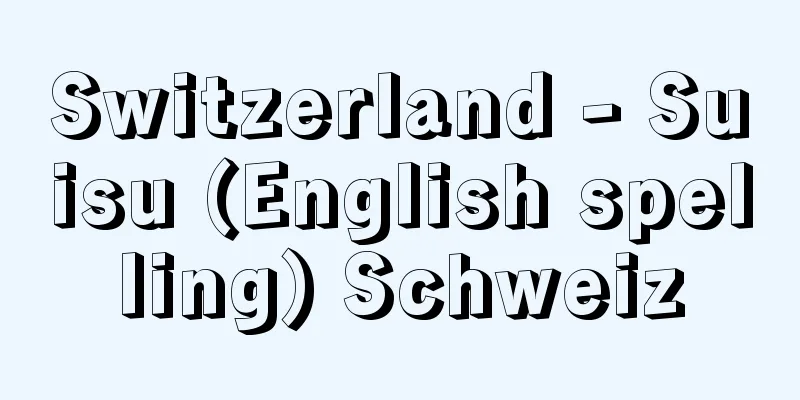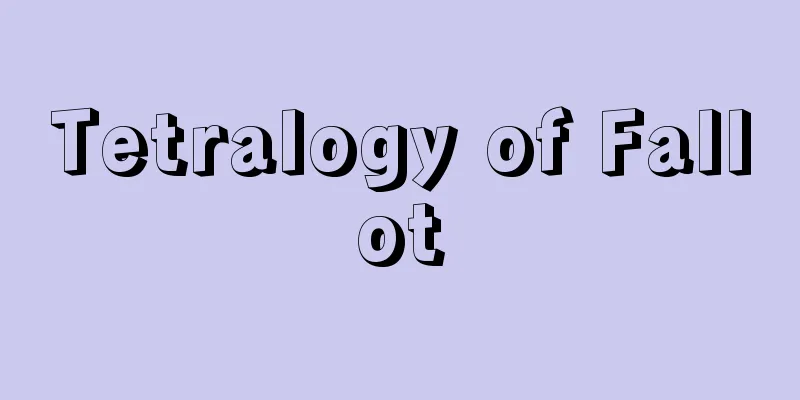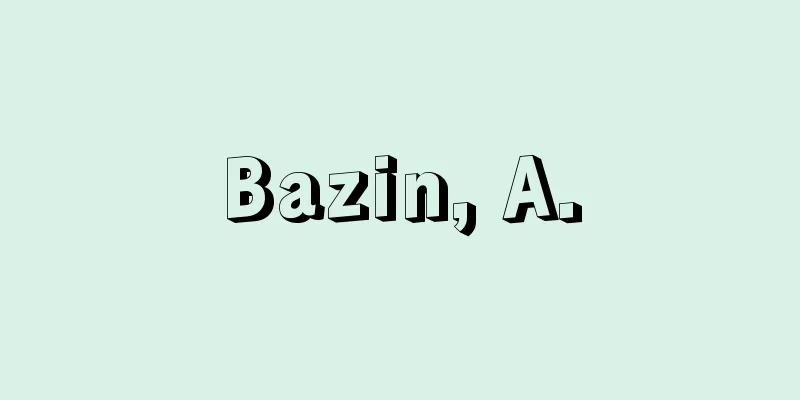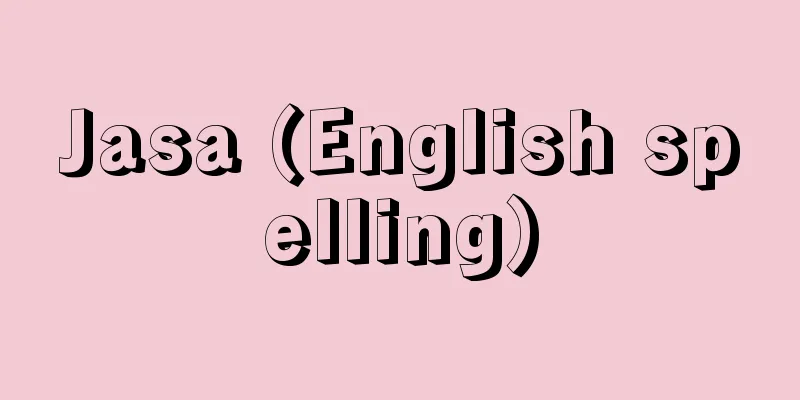Switzerland - Suisu (English spelling) Schweiz

|
A country located in the center of Europe. Its official name is the Swiss Confederation, which is written as Schweizerische Eidgenossenschaft in German, Conféderation Suisse in French, Confederazione Svizzera in Italian, and Swiss Confederation in English. The name Switzerland comes from the canton of Schwyz in the center of the country, and is written as Schweiz in German, Suisse in French, Svizzera in Italian, and Swiss or Switzerland in English. It has an area of 41,285 square kilometers and a population of 7,415,100 (2004), 8,035,391 (2011 census). Its capital is Bern. It is surrounded by France, Germany, Liechtenstein, Austria, and Italy. As the Alps make up 60% of the country's land area, it can be said to be a mountainous country. The Alps, the Jura, Lake Geneva, Lake Constance and the Rhine form the natural framework of Switzerland, and more than two-thirds of its borders are natural boundaries (watersheds, rivers, lakes etc). The deep valleys have their own independence, so the climate of Switzerland is diverse, and the 23 cantons (3 of which are divided into two territories, making the total 26 cantons) have a strong sense of self-governance, but the plains between the Alps and the Jura form a balanced and unified political space. The existence of the major passes in the Alps gives Switzerland the character of an international traffic crossroads, and its close ties with foreign countries through Basel, Geneva, and Lugano give the country a remarkable international character. [Ikuo Maejima] NatureterrainSwitzerland's territory is made up of two folded mountain ranges, the Alps and the Jura, and the hilly Mittelland, which is sandwiched between them. There are four major European rivers whose headwaters are in the Central Alps. The Rhine drains 68% of the country's land area, draining the rain and snow that falls here into the North Sea. The Rhône, Po and Danube drain 18%, 9.3% and 4.4% of the country's land area, respectively. In this way, Switzerland is connected to the rest of Europe through its rivers. In addition to the rivers, the intense glacial action is what gives Switzerland's topography its distinctive features. During the ice age, glaciers pushed into the Alpine foreland, the Mittelland and the foothills of the Padana (Po River basin) plain, carving U-shaped valleys and creating a variety of glacial landforms. In Mittelland, gravel carried by glaciers remains as moraine hills. Taking the cable car from the garden city of Locarno to the heights of Alpe di Guardada not only offers a view over most of the canton of Ticino, but also the highest and lowest points in Switzerland at the same time: Lake Maggiore below, at 193 metres above sea level, is the lowest in Switzerland, while the Dufourspitze, towering in the Monte Rosa range to the west, is the highest at 4,634 metres. [Ikuo Maejima] climateThis difference in altitude of 4,441 meters is large compared to the land area, so the climate also varies greatly. The lake shores of Ticino enjoy a mild climate, and the lush vegetation there shows that it is within the scope of the Mediterranean climate, with orchards shining with silver-gray olive leaves and yellow lemon and orange berries. Other woodlands are covered with lush forests of sclerophyllous trees (called maquis in French), which are typical of the Mediterranean region. On the other hand, the climate in the high mountains is harsh, and at Jungfraujoch (about 3,500 meters) in the Bernese Oberland, tourists can see St. Bernards, a large dog native to Switzerland, running around on the perpetual snow. Between these two extremes, a variety of climatic types exists. The Alps and the Jura act as air barriers. The prevailing winds come from the Atlantic Ocean, so the western and northern slopes of the mountains are moist. In contrast, the foothills of the Jura and the valleys of the interior of the Alps are in the rain shadow, receive little precipitation and are rich in sunshine. The shores of Lake Geneva and the canton of Ticino are the "sunspots" of Switzerland, and are the warmest and most productive areas. Thus, the Mediterranean climate from the south, the Atlantic influence from the west, and the inland character of the Alpine valleys result in a variety of climates. The average annual precipitation is over 1000 mm, but in some deep Alpine valleys it can be as low as 520 mm. [Ikuo Maejima] GeographySwitzerland's topography can be divided into three main regions according to natural boundaries: the Mittelland, the Jura and the Alps. [Ikuo Maejima] MittellandThe centre of modern Swiss activity is in the hills of Mittelland. It is the core of agriculture as well as commerce. All major cities, including Zurich, are located here, with Basel being the only exception. This region serves as the "highway of Switzerland" from the southwest to the northeast, and is a "crossroads" with the Alpine transport routes and the roads through the Jura mountains, so several cities were formed here. The area, apart from the hills, has been turned into cultivated land through river improvement and drainage, making intensive agriculture possible today. The countryside is rich and beautiful, with fruit trees such as apples, pears and peaches that stand out among the grain fields, and the vastness of the vineyards that spread across the slopes of Lake Geneva, mainly between Lausanne and Vevey, is impressive. The international cities of Geneva, Lausanne, and Montreux are beautiful towns on the shores of Lake Geneva overlooking the Alps. Bern, the capital of Switzerland, is an ancient and stately town located where the Aare River meanders through the Bernese Plateau. Although it is the federal capital, not all of the federal administrative agencies are located here, and it is not significantly industrialized. The region centered on Lake Vierwaldstätter (meaning four lakes) that continues to the east is a scenic area surrounded by the four cantons of Lucerne, Unterwalden, Schwyz, and Uri, as its name suggests, and was the center of the formation of the federal state. To the north is the economic city of Zurich, and its lively appearance makes it worthy of being called the economic capital. The Zurich metropolitan area crosses cantonal borders and forms a large population center. [Ikuo Maejima] JuraThe Jura Mountains, which are lower in altitude than the Alps, are dominated by agriculture, livestock and forestry, but the watchmaking industry developed there early on, and watchmaking towns such as La Chaux-de-Fonds, Le Locle, Fleurier and Saint-Imier are found in the mountains. [Ikuo Maejima] The AlpsThe Alps, including the pre-Alps, make up more than half of the country's land area and play an important role in tourism. Passes such as the Saint-Gothard, the Great Saint-Bernard, and the Simplon have long been key to north-south transportation, and even today, tunnels run under the passes, allowing people and goods to be transported by road or rail. The valleys of the Rhine, Rhône, and Inn rivers are also transportation routes that connect to the open sea by boat. These also serve as the arteries of tourism in the Alps. Tourism peaks in summer and winter, and many people visit from abroad. In summer, green pastures cover the slopes, and tourists can enjoy the sight of cows, sheep, goats, and other animals playing in the alpine pastures (alps), and at higher altitudes they can enjoy the world of glaciers and needle-like peaks. In winter, people who enjoy winter sports visit ski resorts, which are well-connected by ropeways and lifts. The famous Swiss dog, the St. Bernard, is pronounced Saint-Bernard in French, and comes from the fact that it was trained as a rescue dog at a monastery at the Saint-Bernard Pass. [Ikuo Maejima] historyUp to the 12th centuryBefore the Christian era, the Swiss region was inhabited by the Celtic Helvetians, but after the conquest by Caesar in 58 BC, it was incorporated into the Roman Empire. Roman colonies were established in various places, and in 15 BC, the Raetians in the eastern mountains were conquered and the whole region became part of Rome. Germanic tribes began to invade from around the middle of the 3rd century AD, and in the 5th century, the Burgundians settled in the western region, the Alamanni in the northeast, and the Lombards in the southern region, and it was around this time that the current language distribution in Switzerland was determined. When Holy Roman Emperor Conrad II became King of Burgundy in 1032, the whole of Switzerland came under the control of the Holy Roman Empire. After that, many secular and religious princes ruled over the region, and among them, the House of Habsburg rose to power with eastern Switzerland as its base. The House of Habsburg pursued a policy of expanding their territory and tried to control the important trade route to the St. Gothard Pass, which was dug around 1200. Meanwhile, the Hohenstaufen Holy Roman Emperors also had their eye on the pass for their control of Italy. [Yasushi Morita] The Three Primitive ProvincesUri was a region located at the northern entrance to the economically and politically important mountain passes. In 1231, King Henry, the German representative of Emperor Frederick II, granted the region a charter of freedom and self-government (imperial freedom), making it a direct province of the empire. The neighboring Swiss region was then granted a similar charter in 1240, and thus gained its freedom from the intermediate power of the Habsburgs. However, after the Interregnum, when Rudolf of Habsburg was elected emperor in 1273, a crisis arose. Not only did the region's protector and enemy become one and the same person, but the House of Habsburg also became powerful. Immediately after Rudolf's death, on August 1, 1291, Uri and Swiss region made a permanent alliance with the people of Niedwalden (Obwalden was not included at first, but was added shortly afterwards, and together with Niedwalden they are called Unterwalden) and pledged to provide each other with free assistance against foreign enemies (the original alliance of the three cantons). This day is the national day of the present Swiss Confederation. In 1315, the House of Habsburg attempted to subjugate the three original cantons by force, but was defeated in the Battle of Morgarten. The city of Schwyz, which led the battle, later became the name for the entire Swiss Confederation. After the victory at Morgarten, the Perpetual Union was renewed and strengthened in Brunnen, forming the basis of the Swiss Confederation. [Yasushi Morita] The Eight Provinces AllianceLucerne joined the league in 1332, and Zurich in 1351, expanding the confederation to include urban communities and strengthening it. This prompted Glarus and Zug, which were under the control of the Habsburgs, to join the league in 1352, and Bern in 1353, forming the so-called Confederation of the Eight Cantons. The Habsburgs tried to recover their former territories, but were defeated in the Battle of Sempach in 1386 and the Battle of Nafels in 1388. The Swiss went on the offensive, occupying Aargau, the birthplace of the Habsburgs, in 1415, making it the first "joint territory" of the Swiss cantons. However, as the cantons expanded in power, conflicts between the cantons led to civil war, and the Old Zurich War broke out in 1436. Zurich, which was at a disadvantage, allied with its former enemy, the Habsburgs. When Zurich joined the Swiss Confederation, it was guaranteed the freedom to form external alliances, so the alliance itself was not a violation, but the cantons were infuriated and supported Switzerland. The Confederation faction won, and the danger of Switzerland's division was averted. At that time, Switzerland was only a very loose confederation of eight regions (cantons) in six alliances with different contents. Only the original three cantons participated in all the alliances and formed the core. However, after the Confederation faction won the Old Zurich War, many neighboring cities and valley communities began to seek alliances with the Confederation in order to protect themselves from the surrounding feudal lords. Since these cities and regions sought alliances for their own needs, they were forced to sign unequal treaties different from the equal treaties within the Confederation of the Eight Cantons, and these cities and regions were distinguished as "dependent cantons", which constituted a kind of protected state and formed the second layer of the Confederation. The "dependent cantons" provided the Confederation with a set number of troops in times of emergency, which dramatically strengthened the military power of the Swiss Confederation. In 1460, the conquest of the Thurgau region was successful, completely driving out the power of the Habsburgs from the left bank of the Rhine and determining the current northern border of Switzerland. The Thurgau region became a "consortium" of seven cantons excluding Bern, and the growing "consortium" formed the third tier of the Confederation, and Switzerland began to take on the form of an independent country. [Yasushi Morita] The Thirteen States AllianceCharles the Bold, Duke of Burgundy, who wanted to form an intermediate state between Germany and France, extended his tentacles to Switzerland. In 1476, the Swiss army defeated the powerful Burgundian army at the Battle of Murten, and the following year, Charles was defeated and killed at the Battle of Nancy. Despite this glorious victory, Switzerland was unable to expand its territory due to internal conflicts between the urban and rural cantons. When these internal conflicts were overcome with the Peace of Stans (1481), the cities of Fribourg and Solothurn, which had made outstanding contributions in the Burgundian Wars, were added from dependent cantons to the official members of the Confederation. At the end of the 15th century, the Habsburgs tried again to recover their lost territories by reforming the empire, but were defeated at the Battle of Dornach, allowing Switzerland to become virtually independent. The cities of Basel and Schaffhausen, which played an active role in the Swabian Wars, were promoted to official members of the Confederation in 1501, followed by Appenzell in 1513, and thus the Confederation of the Thirteen Cantons was formed. This system remained essentially unchanged until 1798. In the early 16th century, Switzerland also participated in the Italian campaigns, and at one point appeared to be on the verge of placing the Duchy of Milan under its protection, but was defeated by King Francis I of France at the Battle of Marignano in 1515. After this, Switzerland gave up its expansionist policy, but during the Italian campaigns it gained the present-day Italian-speaking areas of Switzerland as "joint territories." [Yasushi Morita] Reformation eraThe Reformation that Zwingli carried out in Zurich was accepted in Bern in 1528 and quickly spread throughout Switzerland, posing a threat to the cantons that held to the Old Church. In particular, there was fierce conflict over whether the "common domain" should accept the old or new denomination. In the two Battles of Kappel, Zwingli was killed in battle (1531), and the Old Church gained a temporary victory, but the sectarian conflict threatened to cause the division of the Covenant, which was only a loose confederation. After 1536, Calvin carried out the Reformation in Geneva, and in 1566, the "Second Swiss Creed" was established with the Zwingli faction. This Reformed Church contributed not only to the spiritual and cultural development of the Western world in general, but also to socio-economic and political development. The division and conflict between the old and new sects in Switzerland was the main factor in the creation of the Swiss neutrality policy. The Thirty Years' War (1618-1648), an international religious war, was fought in neighboring Germany, and supporting the old and new sects in Switzerland was feared to once again lead to the breakup of the Swiss Confederation. Declaring its position of "impartiality," it refused requests for help from both sects and created a border defense force in 1640 to protect the borders. In 1647, the Swiss cantons concluded a "defense and military agreement" and established the first national defense regulations for the whole of Switzerland. This was the starting point of Swiss armed neutrality. Then, in 1674, the Conference of the Swiss Confederation clearly declared armed neutrality as the basic foreign policy. This was during the Dutch War (1672-1679) instigated by King Louis XIV of France. In 1648, the Treaty of Westphalia, which ended the Thirty Years' War, granted Switzerland complete legal independence from the Holy Roman Empire. [Yasushi Morita] From the Napoleonic Regime to Permanent NeutralityThe Swiss state system at the time of the French Revolution was based on the Confederation of Thirteen Cantons, but there were many "dependent cantons" and "common territories," and each canton had its own vassal territories. The revolution's ideal of "liberty and equality" had a great impact on Switzerland, sparking the Swiss Revolution. The revolution succeeded in 1798 with the military power of Napoleon, and the "Helvetian Republic" was established based on the French "Constitution of 1795." This centralized state did not fit with the historical tradition of regionalism in Switzerland that had existed for 500 years, and immediately reached the height of chaos. Napoleon mediated this chaos, saying that "Switzerland is destined by nature to become a federal state." He made six cantons, St. Gallen, Graubünden, Aargau, Thurgau, Ticino, and Baud, independent from the "dependent cantons" and "common territories," and established the Swiss Confederation of 19 cantons, making them satellite states of the Napoleonic system. However, the defeat of Napoleon destroyed the federal system under the Treaty of Conciliation, and Switzerland entered the Restoration Period. However, it did not simply return to the old Swiss system. The three French-speaking cantons of Geneva, Valais, and Neuchâtel, which had been under direct French control during the Napoleonic era, formally joined the Swiss Confederation, forming a 22-canton confederation. Under the reactionary, conservative Metternich regime, Switzerland's permanent neutrality was recognized by the great European powers under international law. [Yasushi Morita] Secession WarThe July Revolution in France in 1830 also had an impact on Switzerland, and a new movement based on liberalism arose in the city-cantons. However, radicalism gradually gained power and came into fierce conflict with conservatism. The conflict intensified over the issues of dissolving the monasteries in Aargau and granting educational rights to the Jesuits in Lucerne, and seven cantons, including Lucerne and Schwyz, which took a conservative stance, formed the Separatist League. With the support of countries that were striving to maintain a conservative European system, they started a civil war, but the Separatist League ended up losing (Separatist War). As a result, a new constitution was established in 1848, and the previous small-state confederation was replaced by a federal system consisting of 22 cantons. Then, influenced by the formation of a unified nation by Germany and Italy, a movement to strengthen centralism arose. The constitution was revised in 1874, and the foundations of the current Swiss national system were established. [Yasushi Morita] Switzerland in the First and Second World WarsThe First World War broke out 100 years after permanent neutrality was recognized under international law, and Swiss neutrality faced a major test. Switzerland was not directly attacked, but the Swiss in German-speaking and French-speaking countries felt close to their neighbors, despite their hostile relationship, through their common language and culture, and the country was in danger of internal unrest and division in terms of its spiritual and cultural aspects. In addition, as neighboring countries became battlefields, food supplies and imports of raw materials to Switzerland were cut off, and general strikes were triggered by economic hardship. Believing that true peace could not be maintained by simply maintaining neutrality, Switzerland joined the League of Nations, which advocated peace through solidarity, after the war. However, although Switzerland participated in the League's economic sanctions, it did not join military sanctions and was allowed to maintain a position of limited neutrality (London Declaration). However, when the League of Nations was no longer able to fulfill its collective security function, Switzerland declared absolute neutrality again in 1938, effectively withdrawing from the League of Nations. This neutrality was maintained even when France was surrounded on all sides during World War II, and this was due to the successful implementation of General Henri Guisan's "Reduit Plan," a fighting stance that paid off. The fact that France was able to maintain armed neutrality and escape the ravages of war was praised as a "miracle of the 20th century." However, France also aroused resentment as a "neutral bastard" for maintaining its neutrality even at a time when the criminality of the Nazi Hitler regime had become clear. [Yasushi Morita] Switzerland after the Second World WarAfter the Second World War, Switzerland did not join the United Nations, due to the historical lesson of joining the League of Nations. However, fearing diplomatic isolation amidst the increasing internationalization, the Swiss government announced a Cabinet decision in 1981 that UN membership was "the first step in expanding and strengthening relations with the international community" and "not inconsistent with Swiss neutrality," and proposed membership to the Federal Parliament. With overwhelming support from the Federal Parliament, UN membership was put to a referendum in March 1986, but the result was an overwhelming rejection (75.7% of the total votes, with all cantons opposed). Even in the canton of Geneva, where the UN European headquarters is located, only 30.2% voted in favor, and the people did not change their mind at all from the decision they made 41 years ago when the UN was founded. However, Switzerland actively participated in the UN Security Council's economic sanctions against Iraq in response to Iraq's invasion of Kuwait in 1990, election monitoring in Namibia, and the International Security Force (KFOR) in the Autonomous Province of Kosovo. In March 2002, another referendum on UN membership was held, with 12 of the 23 cantons voting in favour (55% of the total votes), a narrow majority, and Switzerland joined the UN in September of the same year. A referendum on the participation of Swiss troops in UN peacekeeping operations (PKO) was also rejected in 1994, but was approved in June 2001 with 51% in favour. However, the relationship with the EU (European Union) remains an issue that could lead to the risk of Switzerland becoming isolated in international politics and the economy. The EU is promoting European integration with the goal of economic and monetary unification and common security and diplomacy, and if Switzerland does not join, there is a high risk of it becoming isolated in Europe. However, considering Switzerland's long history of neutrality, it is difficult for it to join all at once, so it first aimed to create a loose free trade area by realizing the free movement of money, goods, services, and people between the 12 countries of the EC (European Community, the predecessor of the EU) and the 7 countries of the EFTA (European Free Trade Association). The idea of this EEA (European Economic Area) was signed in Portugal in May 1992, but in a referendum held in December of the same year, the Swiss people even rejected EEA membership. A referendum calling for the early start of negotiations on EU membership in 2001 was also rejected. After that, in June 2005, a national referendum was held asking whether or not to join the Schengen Agreement and the Dublin Convention, which was passed (effective in 2008). The Schengen Agreement is an agreement that was established in 1985 with the aim of liberalizing immigration within Europe, and came into effect in 1995, and simplifies immigration procedures within EU member states, such as abolishing passport inspections. The Dublin Convention stipulates the implementation of a common refugee policy among European member states. A notable event in domestic politics after the Second World War was the recognition of women's suffrage at the federal level in 1971. Subsequently, in 1981, a clause on equal rights for men and women was included in the Federal Constitution, and in 1985, a marriage equality law was also adopted by national referendum. Although women's political participation was extremely slow in Switzerland, the proportion of women in the National Assembly was 43 out of 200 members (21.5%) in 1995, and 53 out of 200 members (26.5%) in 2005. Furthermore, despite the constant religious and linguistic conflicts around the world, Switzerland has held repeated referendums and peacefully recognized the separation and independence of the canton of Jura, and has had a federal system of 23 cantons since 1979. [Yasushi Morita] PoliticsFederal Sovereignty and State SovereigntyThe Swiss Federal Constitution states that the 23 sovereign cantons will transfer part of their sovereignty to the Federation to form a federal state. The Federation is responsible for the representation, foreign affairs, national defense, customs, large-scale state-run businesses, etc., which are listed in the Federal Constitution, and each canton can exercise sovereignty over matters not stipulated in the Federal Constitution, such as the judiciary, education, taxation, and health care. To this end, each canton formulates its own constitution and carries out its duties through its own legislative, executive, and judicial bodies. Federal power is exercised by a two-house Federal Parliament: the National Assembly and the State Assembly. The former has 200 members, elected by each state in proportion to its population based on a decennial census. The latter has two members each, elected by each state according to its own method and paid by the state. The composition of the two houses corresponds to the sovereignty of the people and the sovereignty of the cantons. The Federal Cabinet is made up of seven ministers, elected by a joint sitting of both houses, for four-year terms, and since 1959 has been chosen in a ratio of 2:2:2:1 from the top four parties. The President and Vice-President are elected by rotation from among the seven ministers for one-year terms, and do not have any particularly strong powers. The Federal Court sits in Lausanne. Its judges are selected by a joint sitting of both houses of parliament, with a view to representing the three languages of Germany, France and Italy. The Federal Court hears cases between the federal government and cantons, between cantons and cantons, between cantons and private citizens, cases concerning the constitutional rights of citizens, and criminal cases such as treason. Most other cases are handled by cantonal courts. The Federal Insurance Court sits in Lucerne and hears insurance-related claims. [Yasushi Morita] Direct democracySwiss politics is characterized by strong cantonal power and direct democracy. There are two systems of direct democracy: popular initiative and referendum. At the federal level, a popular initiative is the right to request parliament to amend the federal constitution in full or in part, with the signatures of more than 100,000 voters. A referendum is the final decision of the people on whether to accept or reject a bill, and there are compulsory and voluntary referendums. The former is when the amendment bill is submitted to a referendum, regardless of whether the people request it or not, in the case of constitutional amendment, and the latter is when a referendum is held when 50,000 voters request it within 90 days of the parliament passing a bill. It is worth noting that each canton also has the right to these direct democratic systems. First, each canton has the right to initiate amendments and legislation to the federal constitution to the government authorities, and second, if the eight cantons agree, they can request a voluntary referendum. Furthermore, in a compulsory referendum, if a majority of the states do not vote in favor, the proposal will be rejected even if a majority of the people are in favor. Here again, the idea of state sovereignty is strongly evident. になったんです。 English: The first thing you can do is to find the best one to do. Therefore, Swiss citizens must directly address politics at all levels and go to polling stations several times a year. Recently, voter turnout has declined even in Switzerland, which boasts a direct democracy system, and has become a problem. [Yasushi Morita] Eternal neutralityになったんです。 English: The first thing you can do is to find the best one to do. Although Switzerland remained armed neutral during World War II, it was criticized harshly by international public opinion for repelling Jews who had fled Nazi persecution at the border and leaving the assets of slaughtered Jews in Switzerland's banks. In 1996, the Swiss government apologised to Jewish groups for refusing to enter the country during World War II, and established a committee to investigate the truth about Nazi gold and Jewish assets. In order to maintain armed neutrality, Switzerland adopts a universal military system and militia system, and therefore, conscientious anti-service aversion is not recognized as a general rule, and refugees are forced to work non-military labor 1.5 times the duration of their military service. Weapons, ammunition, military uniforms, and other personal equipment are stored in each household of the militia, and are set up so that they can be dispatched immediately in the event of an emergency. [Yasushi Morita] Economy and IndustryThe natural foundations of Switzerland are disadvantaged for economic development. Due to geology, topography and climate, there is little fertile soil and wide wastelands have prevented the growth of agricultural production. In addition, the lack of raw materials and energy resources has hindered the development of industry. However, despite these poor conditions, due to the conditions given to nature or created by effort, such as abundant hydropower, skilled labor, abundant capital, excellent transportation location and tourism resources, it is now a rich industrial country. The main industries are machinery and equipment, electricity, metals, chemical industry, finance, tourism, etc. The currency is Swiss Franc. [Ikuo Maejima] Agriculture and livestockになったんです。 English: The first thing you can do is to find the best one to do. In mountain areas such as the Alps, Jura and Pre-Alps, where precipitation is high, livestock pastors are mainly used because grain is difficult. Because the soil is clay, the focus is on livestock raising and dairy farming in a wide area with natural conditions that are favorable for feed cultivation, and these account for 75% of agricultural production. In addition to natural pastures (cut grass pastures and pastures), cultivated pastures are wide, and cultivated pastures such as clover and alfalfa are produced as feed. About half of the cows raised are dairy cows, but dairy products are in serious competition from cheap foreign products, and the shift from milk production to fattening feed production is currently underway. In addition, as the demand for pork is increasing, the importance of pig farming is increasing. The form of livestock is a type of grazing, and is characteristic of the Alps (including Austria). This type of agriculture is called the Alp economy. The alp is a summer pasture land above the forest limit. In winter, livestock raised in the main village at the bottom of the valley in the winter is moved to a temporary pasture called Maiensäß on the middle side of the slope, and then in summer they are caught up in the Alp. In autumn, they are raised on the middle side, and return to the main village in late autumn. In mountainous states, the Alp area is large, reaching 11,000 square kilometers across Switzerland, and is distributed in 19 states. Graubünden is about a third of the Alp. Here, the difference in altitude between the main village and the Alp is 2,000 meters. This ancient agricultural style still plays an important role today. [Ikuo Maejima] Industryになったんです。 English: The first thing you can do is to find the best one to do. Chemicals, pesticides, fertilizers, dyes, and other products produced by the chemical industry are distinctive products, and have grown significantly since 2000. Most of the annual output is made by the four major companies in Basel. The long-standing textile industry has declined, but the embroidery industry in Appenzell and St. Gallen are aiming to export specialty products. Other dairy products and chocolates are also famous for its food industry, which is based on Swiss agriculture. It is also a major accumulation of bio and high-tech industries, and is expected to develop. Hydroelectric power generation is a thriving energy resource, making it a distinctive feature of this country. Of the electricity demand, 55.3% is hydroelectric power generation and 40% is nuclear power generation (2004). Oil, natural gas, and coal must be imported. [Ikuo Maejima] Characteristics of the Swiss economy and tourismSwitzerland's gross domestic product is less than 10% of Japan's gross national income, but its gross national income per person is 48,230 (2004), exceeding Japan, the highest economic level in the world, surpassing Japan, the United States, Denmark, and Germany. This could be attributed to the high-level science and technology, skilled labor, and the concentration of high value-added machinery, clocks and chemical industries, but it cannot be overlooked that the fact that the fact that the war was not affected by the war through a permanent neutral policy has encouraged economic development. Despite this, Switzerland's trade balance is structurally in a deficit, and this is compensated for with tourism and capital revenues to support the balance of payments. Interlaken, Zermatt, St. Moritz, Lucerne, Davos, Locarno and many other places represent Swiss beauty and attract tourists. World heritage sites include "Old Town of Bern," "Monastery of St. Gallen," "Monastery of St. John of Musty's Benedictine," "Three Castles, Fortress and Walls in the Old Town of Belinzona," "Jungfrau-Arecci, the Swiss Alps," and "Mount of Saint Giorgio." The number of museums and museums is over 900, and is diverse, including the Swiss National Museum, the Museum of Art Bern, the Paulkley Centre, the Segantini Museum of Art, the Tingery Museum, the largest clock museum in the world, the largest transportation museum in Europe, and the Olympic Museum.になったんです。 English: The first thing you can do is to find the best one to do. The global financial crisis that occurred in 2008 had a significant impact on the Swiss economy, with public capital injections being carried out at UBS, the core of finance. [Ikuo Maejima] Society and CulturePopulation/Foreign workersになったんです。 English: The first thing you can do is to find the best one to do.になったんです。 English: The first thing you can do is to find the best one to do.になったんです。 English: The first thing you can do is to find the best one to do. The Swiss people living abroad have 360,000, and they play a leading role in the Swiss economy's expansion into the world. France is the overwhelming majority of Swiss people, with Germany and the United States being the second to this. About half of Swiss residents living abroad have Swiss nationality as well as citizenship in that country. In recent years, cities and villages have been developing beyond their original boundaries. Significant population migration is found in Mittelland, sandwiched between Lake Leman and Lake Borden, where populations such as Geneva, Lausanne, Bern, Lucerne, Zurich, Winterthur, and Basel have formed population-rich areas due to population inflows from mountainous areas. The population of the Zurich metropolitan area, the largest population-rich area, has already reached about 1 million (2003), and includes 50 towns and villages. On the other hand, population outflows appear as a separatist phenomenon in rural areas, especially mountain villages, making it a serious problem. [Ikuo Maejima] Education Systemになったんです。 English: The first thing you can do is to find the best one to do. The federal constitution stipulates that compulsory education is eight years, but in most states, this period is nine years from age 6. This applies to elementary schools and junior high schools. Elementary schools range from three to six years depending on the state, but in about two-thirds of states, the same as in Japan, the six-year period. The most common junior high schools are junior high schools and professional junior high schools, which are pre-commissioned to high schools, and depending on their aptitude, they can become trainees at a company or store, or go to a full-time vocational school, or go to a regular high school for university entrance. High schools have a four-year system, and then go to university, teacher training, and vocational schools related to craftsmanship. Those who have completed a regular high school can enter university without exams. There are ten state universities: the University of Basel (founded in 1460, the oldest university in Switzerland), the University of Geneva (1559), the University of Zurich (1833), the University of Bern (1834), the University of Fribourg (1889), the University of Lausanne (1890), the University of St. Gallen (1898), the University of Neuchâtel (1909), the University of Italian in Switzerland (1996), the University of Lucerne (opened as a comprehensive university in 2000 based on the Seminary of Lucerne in the 16th century), and the University of Science and Technology Zurich (abbreviated as ETHZ, 1854) and the University of Lausanne (abbreviated as EPFL, 1853). There are seven other specialist universities in applied science and 15 specialist universities in education. The number of university students from 2004 to 2005 was approximately 200,800 (46% of which were female), with a large number of foreign students. [Ikuo Maejima] languageになったんです。 English: The first thing you can do is to find the best one to do. French is used in the western provinces of Geneva, Beau, Neuchâtel, Jura, Valley, Fribourg and Bern. Italian is used mainly in the southern province of Ticino. Despite being multiple languages, Switzerland does not have a language war. This is because linguistic society does not overlap with political or religious society. Swiss people can be thought of as belonging to one of the surrounding German, French or Italian cultural spheres, but their national consciousness is Swiss. Literature written in each language also has its own style. [Ikuo Maejima] religionThe distribution of religion does not match that of language. 41.8% of Swiss are Catholic, 35.3% are Protestant, and 1.8% are Eastern Orthodox. There are also 4.3% of Muslims (2000). Considering past religious wars, the federal constitution has guaranteed religious freedom since 1848. Protestant and Catholic regions are intricate with each other, with Catholic in the Alps and Protestants prevailing in Mittelland. As Switzerland as a whole, the change in the proportion of residents belonging to each sect is hardly an issue. However, taking into account foreign migrants, it can be said that the number of Catholics is on the rise. [Ikuo Maejima] Relations with JapanHistory of Japan-Switzerland relationsになったんです。 English: The first thing you can do is to find the best one to do. This Jesuit theatre featured the martyrdom of Japanese Christians as a great theme for Christian Passion. In particular, Lucerne was a focus, and in Switzerland, plays with Japanese people as the main characters were repeatedly performed in Switzerland, from the first half of the 17th century to the first half of the 19th century. Carnival drama itself was the most popular in Switzerland in the 16th century, but was once again energized in modern form at the hands of the Japanese Association in Schweiz in the 19th century. This is because a carnival drama called Die Schweiz in Japan was performed in 1863. Since Japan and Switzerland officially formed diplomatic relations in 1864 (Genji 1), the "Japanese Association" was not a Japanese organization, but a group of Schweiz people. When the Japan-US Treaty of Amity and Commerce was concluded in 1858 (Ansei 5), Switzerland also sent semi-public and semi-private envoys from 1859 to 1860 (Manen 1), but the shogunate refused to trade. Switzerland is said to be a parody of this frustration of trade negotiations with Japan. The Treaty of Nisui (Japan-Switzerland) was concluded in 1864, and Aimé Humbert (1819-1900), the Swiss envoy who was active at the time, wrote a two-volume book, Le Japon illustré , in 1870 after returning to Japan, and has become a valuable historical document. になったんです。 English: The first thing you can do is to find the best one to do. Since 1879, the Minister of France to France became the Swiss Minister, and the first legation was opened in Bern in 1916 (Taisho 5). になったんです。 English: The first thing you can do is to find the best one to do. This book was republished in 1947 (Showa 22) after World War II, but it is thought that the postwar Swiss model theory had a foundation from the Meiji period. [Yasushi Morita] Current relationshipになったんです。 English: The first thing you can do is to find the best one to do. Today, the world-renowned Swiss companies that have a deep connection to the lives of Japanese people include Nestlé, a food company known for its instant coffee and chocolate, La Roche, a pharmaceutical company known for its merger with Chugai Pharmaceuticals, and the production of Tamiflu, an influenza drug, and Swatch, a watch maker. The Japan Swiss Association was founded in Tokyo in 1955, and the Swiss-Japan Chamber of Commerce and Industry was established in Zurich in 1985, and the two countries are promoting cultural and economic exchanges. [Yasushi Morita] "World Geography 7: Europe II" edited by Kiuchi Nobuzo (Asakura Shoten)" ▽ "O. Behr, translated by Maejima Ikuo, "All-translated World Geography Textbook Series 18: Switzerland - Its Land and People" (1979, Teikoku Shoin)" ▽ "Naga Mayumi, Swiss Railways (1980, Heibonsha)" ▽ "Abe Taikatsu, Swiss Illustrated Image and Real Image (1981, Mainichi Shimbun)" ▽ "Cummery + Fly Edition, translated by Morita Yasukazu, Switzerland - Nation, Economy, Culture" (1985, Jitsugyo no Nihonsha)" ▽ "World Handbook Series, Edited by the Embassy of Japan: Swiss Federation, Republic of Austria, and Principality of Liechtenstein (1985, Japan Institute of International Studies)" ▽ "L. Stucki, translated by Yoshida Yasuhiko, "Swiss Wisdom: The Secret of Economic Kingdom: The Secret of Success" (1987, Simul Publishing)" ▽ "Compiled and published by Japan External Trade Promotion Association, Trade Market Series 211, Switzerland (1988), " ▽ "Swiss Alps Hiking Guide" (1991, Yama to Keikosha)" ▽ "Ogawa Kiyomi and Sakakura Tokiko, Journey through the Swiss Alps" (1992, Shinchosha)" ▽ "Ogawa Kiyomi, Photographing the Swiss Alps - Easy Learning Photography Class" (2006, Shinchosha)" ▽ "A. Zaxer, translated by Saguchi Taku and Harumi Shizuko, "Overseas Social Welfare Selection 3: Swiss Social Security System" (1992, Mitsuokan)" ▽ "Morita Yasuichi, "Switzerland - From History to the Modern Times" (1994, Tosui Shobo)" ▽ 『森田安一編『スイス・ベネルクス史』新版(1998・山川出版社)』 ▽ 『森田安一編『スイスの歴史と文化』(1999・刀水書房)』 ▽ 『森田安一編『岐路に立つスイス』(2001・刀水書房)』 ▽ 『森田安一著『世界歴史の旅 スイス――中世都市の旅』(2003・山川出版社)』 ▽ 『森田安一編『スイスと日本――日本におけるスイス受容の諸相』(2004・刀水書房)』 ▽ 『森田安一編『日本とスイスの交流――幕末から明治へ』(2005・山川出版社)』 ▽ 『森田安一著『物語スイスの歴史――知恵ある孤高の小国』(中公新書)』 ▽ 『U・イム・ホーフ著、森田安一監訳『スイスの歴史』(1997・刀水書房)』 ▽ 『堀淳一著・写真『ライン川源流域紀行――知られざるスイスの水の風景』(2000・東京書籍)』 ▽ 『野々瀬浩司著『ドイツ農民戦争と宗教改革――近世スイス史の一断面』(2000・慶応義塾大学出版会)』 ▽ 『井上貴子著『霊峰に育まれたスイスのワイン』(2001・産調出版)』 ▽ 『谷川彰英監修『NHK地球たべもの大百科12 スイス チーズフォンデュ』(2001・ポプラ社)』 ▽ 『黒沢隆文著『近代スイス経済の形成――地域主権と高ライン地域の産業革命』(2002・京都大学学術出版会)』 ▽ 『踊共二著『改宗と亡命の社会史――近世スイスにおける国家・共同体・個人』(2003・創文社)』 ▽ 『美根慶樹著『スイス歴史が生んだ異色の憲法』(2003・ミネルヴァ書房)』 ▽ 『長真弓著『スイスの鉄道――アルプスから碧水の湖畔、石畳の街までを網羅』(2003・JTB)』 ▽ 『鈴木光子、W・ホーフシュトラッサー著『スイスを旅する会話』(2004・三修社)』 ▽ 『根本幸男著『とことんスイス鉄道一人旅――予定なしの乗りまくりガイド』(2004・光文社)』 ▽ 『田所辰之助・浜嵜良実・矢代真己編『世界の建築・街並みガイド4 ドイツ・スイス・オランダ・ベルギー』(2004・エクスナレッジ)』 ▽ 『『世界鉄道の旅 山岳鉄道でゆくスイス絶景紀行/ドイツ/イギリス』(2005・学習研究社)』 ▽ 『池田光雅著・写真『スイス山岳列車の旅』(2005・東京書籍)』 ▽ 『P・ギショネ著、内田日出海・尾崎麻弥子訳『フランス・スイス国境の政治経済史』(2005・昭和堂)』 ▽ 『森寿博・森章子著『環境にやさしいスイスの村』(2005・本の泉社)』 ▽ 『岡本三彦著『現代スイスの都市と自治――チューリヒ市の都市政治を中心として』(2005・早稲田大学出版部)』 ▽ 『小島潔著『スイスアルプスの花を訪ねて』(2006・山と渓谷社)』 ▽ 『土田陽介著『スイス・アルプス紀行東部編――『アルプスの少女ハイジ』の世界に浸る』(2006・日経BP出版センター)』 ▽ 『磯山友幸著『ブランド王国スイスの秘密』(2006・日経BP出版センター)』 ▽ 『C・ジリヤール著、江口清訳『スイス史』(白水社・文庫クセジュ)』 ▽ 『國松孝次著『スイス探訪――したたかなスイス人のしなやかな生き方』(角川文庫)』 ▽ 『福原直樹著『黒いスイス』(新潮新書)』 ▽ 『中塚裕著『スイス――花の旅』(中公新書)』 ▽ 『E. Egli ed.Switzerland, A Survey of its Land and People (1978, Paul Haupt, Bern)』 ▽ 『Der Grosse Schweizer Atlas (1981, Kümmerly +Frey, Bern)』 [参照項目] |||||||||||||||||||||||||||||||||||||||||||||||||||||| ||||||||| ||||||||||||||||||||||||||| ||||||[補完資料] |"> Swiss flag ©Shogakukan Illustration/Shogakukan Creative "> スイス位置図 アルプスのベルナー・オーバーラントにある高峰(標高4158m)。アイガー山、メンヒ山とともにベルナー・オーバーラントの三名山といわれる。山名は「若い花嫁」の意。世界自然遺産「スイス・アルプス ユングフラウ‐アレッチ」の一部(スイス・2001、2007年登録) スイス ユングフラウヨッホ©Shogakukan "> ユングフラウ山 スイスで観光客がもっとも多い地域の一つ。湖岸は屈曲に富み、四つの湖に分割される。写真は湖の北西部を構成するルツェルン湖。後方はピラトゥス山(標高2129m)。スイス ルツェルン©Shogakukan "> フィアワルトシュテッター湖 自然にめぐまれたレマン湖沿岸の都市は、国際的保養地として知られている。スイス モントルー©Tatsuo Katsumata "> レマン湖とモントルー市街 ベルン旧市街付近の蛇行部。スイス ベルン©Shogakukan "> アーレ川 ©Shogakukan "> 13州時代のスイス(1513~1797… ©Shogakukan "> スイスの言語分布 いまなお中世のおもかげを残す町並み。ひときわ高い建物がゴシック様式のミュンスター大寺院(1421~1598建築)で、塔の高さは約100m。世界文化遺産「ベルン旧市街」(スイス・1983年登録) スイス ベルン©Shogakukan "> ベルン旧市街 旧市街中心部のクラム通り。市の象徴である時計塔ツィットグロックターム(写真左奥)は1530年の再建。ツェーリンゲンの噴水(写真中央)をはじめ、市内の交差点や広場には中世の噴水が数多く残る。世界文化遺産「ベルン旧市街」の一部(スイス・1983年登録) スイス ベルン©Shogakukan "> ベルンの町並み 市内を貫流するリマト川と町並み。旧市域には多くの歴史的建造物が残る。スイス チューリヒ©Masashi Tanaka "> チューリヒ市街 ブリエンツ湖(写真左)とトゥーン湖の間にある町。ベルナー・オーバーラントへの観光の中心地で、観光客やスキーヤーなど、多くの人が訪れる。スイス インターラーケン©Shogakukan "> インターラーケン市街 アルプス山中の高所(標高1616m)にあるスイス屈指の山岳リゾート地。マッターホルン山(写真後方)をはじめ、イタリアとの国境に連なる高峰の登山基地としても有名である。スイス ツェルマット©Shogakukan "> ツェルマット市街 サリーヌ川に臨む旧市街の一部。ゴシック様式の建物が残り、中世のおもかげをよくとどめている。スイス フリブール©Shogakukan "> フリブール旧市街 スイス中部にあるルツェルン州の州都。湖に囲まれた典型的なスイスの町で、旧市街には16~17世紀の建物が多く残る。写真手前はロイス川、後方はフィアワルトシュテッター湖。スイス ルツェルン©Shogakukan "> ルツェルン旧市街 中世ヨーロッパの文化の中心的存在であった修道院。火災での焼失や宗教改革での破壊などにあい、現在の建物は18世紀に再建されたものである。付属図書館には1000年以上も前の写本や書物などが2000近く所蔵されている。世界文化遺産「ザンクト・ガレンの修道院」(スイス・1983年登録) スイス ザンクト・ガレン©Shogakukan "> ザンクト・ガレン修道院 A monument erected in 1917 to commemorate the 400th anniversary of the birth of the religious reformer J. Calvin. The statues of Calvin and four other religious reformers are engraved on it (from left to right: Farel, Calvin, Beze, and Knox). Geneva, Switzerland ©Shogakukan "> Reformation Wall スイスのサン・モリッツ(またはクール)とイタリアのティラノを結ぶ高山列車。ベルニーナ峠を越える路線で、車窓からはアルプスの美しい自然が楽しめる。延長約145km。スイス アルプ・グリュム駅付近©Tatsuo Katsumata "> ベルニーナ特急 Source: Shogakukan Encyclopedia Nipponica About Encyclopedia Nipponica Information | Legend |
|
ヨーロッパの中央部に位置する国。正式名称はスイス連邦であり、ドイツ語でSchweizerische Eidgenossenschaft、フランス語でConféderation Suisse、イタリア語でConfederazione Svizzera、英語でSwiss Confederationと表記する。スイスという名称は、同国中部のシュウィーツSchwyz州に由来し、ドイツ語ではシュワイツSchweiz、フランス語ではシュイスSuisse、イタリア語ではスビッツェラSvizzera、英語ではスイスSwissまたはスウィッツァーランドSwitzerland。面積4万1285平方キロメートル、人口741万5100(2004)、803万5391(2011センサス)。首都はベルン。周囲をフランス、ドイツ、リヒテンシュタイン、オーストリア、イタリアの諸国に囲まれる。国土の6割をアルプスが占めるので山地の国といえる。アルプス、ジュラ山脈、レマン湖、ボーデン湖、ライン川がスイスの自然空間の骨組みを形成しており、国境の3分の2以上は分水界、河川、湖沼などの自然の境界である。 深く刻まれた谷空間は独立性をもつため、スイスの風土は多様であり、23の州(うち3州は二つの準州に分かれているので、準州を含めると26州)は自治的色彩が濃いが、アルプスとジュラ、これらに挟まれた平野部は均衡のとれた統一的な政治的空間を形成している。アルプスの主要な峠の存在はスイスに国際交通の十字路としての性格を与え、バーゼル、ジュネーブ、ルガノを通じて外国と密接に結ばれ、この国に著しい国際的性格を付与している。 [前島郁雄] 自然地形スイスの国土は、アルプスとジュラの二つの褶曲(しゅうきょく)山脈と、それに挟まれた丘陵地ミッテルラントの三者から構成される。中央アルプスに水源をもつヨーロッパの主要河川は四つある。ライン川は国土の68%を流域とし、ここに降った雨雪を北海に排水する。ローヌ川、ポー川、ドナウ川もそれぞれ国土の18%、9.3%、4.4%を流域とする。このように河川を通じてスイスはヨーロッパ全域と結ばれている。河川のほかにスイスの地形に特色を与えているのは激しい氷河の作用で、氷期にはアルプス前地、ミッテルラントやパダナ(ポー川流域)平野の山麓(さんろく)部へ氷河が押し出し、そのときにU字谷を刻み、多様な氷食地形をつくりだした。またミッテルラントには氷河により運ばれた礫(れき)がモレーン(氷堆石(ひょうたいせき))の丘として残っている。 庭園都市ロカルノからロープウェーでアルペ・ディ・ガルダーダの高所に昇れば、ティチーノ州のほとんどを展望できるのみならず、スイスの最高所と最低所を同時に見ることができる。眼下のマッジョーレ湖は標高193メートルでスイスでもっとも低く、西方のモンテ・ローザ山群中にそびえるデュフールシュピッツェは4634メートルでもっとも高い。 [前島郁雄] 気候この4441メートルの標高差は国土面積に比し大きいので、気候の地域差も大きい。ティチーノ州の湖岸は温和な気候の恩恵を被って、その豊かな植生は地中海式気候の作用範囲にあることを示し、樹園には銀ねず色のオリーブの葉、レモンの黄色の、またオレンジの橙(だいだい)色の実が輝いている。それ以外の樹林地には地中海地方特有の低木硬葉樹の叢林(そうりん)(フランス語でマキmaquisとよぶ)が茂っている。一方、高山の気候は厳しく、ベルナー・オーバーラントにあるユングフラウヨッホ(約3500メートル)では、観光客はスイス原産の大形犬セントバーナードなどが万年雪の上を走り回るのを見ることができる。 これら二つの極端な気候の間に多様な気候型が存在する。アルプスとジュラの両山脈は気流の障壁として作用する。卓越風は大西洋から吹くので、山地の西ないし北斜面は湿潤である。それに対し、ジュラ山脈の山麓とアルプス内部の谷は雨陰となり、降水量が少なく、日射に恵まれる。レマン湖岸とティチーノ州はスイスの「日だまり」で、もっとも温暖で生産力の高い地域である。このように南から地中海式気候が、西から大西洋の影響が作用し、アルプスの谷では内陸的性格が加わって、多様な気候となる。年降水量は平均して1000ミリメートルを超すが、アルプスの深い谷では520ミリメートルの所がある。 [前島郁雄] 地誌スイスの地誌的区分は、自然的境界に従ってミッテルラント、ジュラ、アルプスの、大きく三つに分けることができる。 [前島郁雄] ミッテルラント現代スイスの諸活動の中心はミッテルラントの丘陵地にある。ここは商工業のみならず農業についても核心地域となっている。チューリヒをはじめ主要都市はここに集まり、バーゼルだけが例外である。この地方は南西―北東方向の「スイスの大通り」の役割をしており、アルプス越えの交通路やジュラ山脈を通る道路との「交差点」にあたるため、いくつかの都市が形成された。この地域は、丘陵地のほかは河川改修・排水により耕地化が進み、現在の集約的農業が可能となった。農村は豊かで、箱庭的な美しさをもち、リンゴ、ナシ、モモなどの果樹が穀物畑の中に際だっており、ローザンヌとブベーの間を中心とするレマン湖岸の斜面一帯に広がるブドウ耕作地の壮大さは印象的である。 国際都市ジュネーブ、ローザンヌ、モントルーはアルプスを望むレマン湖畔の美しい町である。スイスの首都ベルンは、アーレ川がベルン高原を刻み蛇行する部分に立地する古い風格のある町である。連邦首都ではあるが、連邦行政機関のすべてがここに集まっているわけではなく、工業化も著しくない。その東に続くフィアワルトシュテッター湖(四州湖の意)を中心とする地方は、その名の示すようにルツェルン、ウンターワルデン、シュウィーツ、ウリの4州に囲まれた風光明媚(めいび)な土地で、連邦形成の中心となった所である。その北方には経済都市チューリヒがあり、活気ある町の姿は経済的首都とよぶにふさわしい。チューリヒの都市圏は州境を越え、一大人口集積地域を形成している。 [前島郁雄] ジュラアルプスに比べると高度が低いジュラ山脈地域は農牧・林業が卓越するが、早くから時計工業が発達し、ラ・ショー・ド・フォン、ル・ロクル、フリュリエ、サン・ティミエなど時計の町がこの山中にある。 [前島郁雄] アルプスアルプスはその前山である前アルプスを含めて国土の過半を占め、観光のうえで重要な役割を果たす地域である。サン・ゴタルド峠、グラン・サン・ベルナール峠、シンプロン峠などの峠は、古くから南北交通の要(かなめ)であったが、現在でも、峠の下にトンネルが通じ、自動車道路あるいは鉄道によって人と物資の輸送が行われる。また、ライン川、ローヌ川、イン川などの谷は、舟運により外海に通じる交通路である。これらはアルプス観光の動脈ともなっている。観光は夏と冬にそのピークがあり、外国から多くの人々が訪れる。夏には斜面に緑の牧草が茂り、観光客はウシ、ヒツジ、ヤギなどが高山放牧地(アルプ)に遊ぶ風景をめで、さらに高所に至っては氷河と針峰の世界に遊ぶことができる。冬にはウィンタースポーツを楽しむ人々が、ロープウェーやリフトが四通八達したスキー場を訪れる。なお、スイスの犬として有名なセントバーナードは、フランス語読みではサンベルナールであり、サン・ベルナール峠にあった修道院で救助犬として訓練されたことに由来する。 [前島郁雄] 歴史12世紀まで紀元前のスイス地域にはケルト系のヘルベティア人が居住していたが、前58年カエサルの征服を受けて、以後ローマ帝国の版図に組み入れられた。各地にローマ植民都市が建設され、前15年には東部山地にいたラエティア人も征服されて全土がローマに属した。紀元後3世紀中ごろからゲルマン系民族の侵入を受けはじめ、5世紀には西部地域にブルグント人、北東地域にアラマン人、南部地域にはランゴバルド人が定住、現在のスイスの言語分布がこのころに決定された。1032年に神聖ローマ皇帝コンラート2世がブルグント王を兼ねると、全スイス地域は神聖ローマ帝国の支配下に入った。その後、多数の聖俗諸侯が割拠し、そのなかからハプスブルク家が東スイスを拠点に台頭してきた。ハプスブルク家は家領拡大政策をとり、1200年ごろ開削されたサン・ゴタルド峠に至る重要交易路を支配下に置こうとした。一方、ホーエンシュタウフェン朝の各神聖ローマ皇帝もイタリア経営のためにこの峠に注目していた。 [森田安一] 原初三州経済的、政治的に重要だった峠への北の登り口に位置した地域がウリだった。皇帝フリードリヒ2世のドイツにおける代理者ドイツ王ハインリヒは1231年この地に自由と自治(帝国自由)の特許状を付与し、帝国直轄地とした。ついで、隣接のシュウィーツも1240年に同様の特許状を得て、中間権力たるハプスブルクからの自由を獲得した。ところが、大空位時代を経て1273年にハプスブルク家のルードルフが皇帝に選出されると、危機が訪れた。この地の保護者と敵対者が同一人物になっただけでなく、ハプスブルク家が強大になったからである。ルードルフの死後ただちに、1291年8月1日、ウリ、シュウィーツはニートワルデンの人々と永久同盟を結び(当初オプワルデンは名を連ねておらず、少しあとに加わり、ニートワルデンとあわせてウンターワルデンとよばれる)、外敵に対し相互の無償援助を誓約しあった(原初三州の同盟)。この日は現在のスイス連邦の建国記念日となっている。ハプスブルク家は1315年に原初三州を武力で制圧しようと試みたが、モルガルテンの戦いに敗れた。この戦いを勝利に導いたシュウィーツは、その後スイス誓約同盟全体をさす名称となった。モルガルテンの勝利後、永久同盟はブルンネンにおいて更新、強化され、スイス誓約同盟の基礎となった。 [森田安一] 八州同盟1332年にルツェルン、1351年にチューリヒが同盟に加わり、誓約同盟は平野部に広がり、都市共同体を含んで強化された。これを契機に、ハプスブルク家の支配下にいたグラールス、ツークが1352年に、ベルンが1353年に同盟に加わり、いわゆる八州同盟が成立した。ハプスブルク家は旧領回復を試みたが、1386年ゼンパッハの戦いに、1388年ネーフェルスの戦いに敗れた。攻勢に転じたスイスは1415年にハプスブルク家の出身地アールガウを占拠し、その地をスイス諸州の最初の「共同支配地」とした。ところが、諸州が勢力を拡大するにつれて、諸州間の対立が内乱を生むことになり、1436年古チューリヒ戦争が勃発(ぼっぱつ)した。劣勢に陥ったチューリヒは、旧敵ハプスブルク家と同盟した。チューリヒはスイス誓約同盟に参加する際、対外同盟の自由を保障されていたので、この同盟自体は違反行為ではなかったが、諸州は激高してシュウィーツを援助した。誓約同盟派が勝利し、スイス分裂の危険は避けられた。この時期のスイスは、六つの内容的に異なる同盟関係によって八つの地域(諸州)が同盟しあうきわめて緩い連合体にすぎなかった。全部の同盟関係に参与し、核となっていたのは原初三州だけであった。しかし、古チューリヒ戦争に誓約同盟派が勝利を得ると、近隣の都市や渓谷共同体が周囲の封建諸侯から身を守るために、誓約同盟に多数同盟を求めてくるようになった。これらの都市・地域の場合は自らの必要上援助を求める形で同盟を求めてきたので、八州同盟内の対等条約とは異なった不平等条約を結ばされ、これらの都市・地域は「従属州」とよばれて区別され、いわば被保護国を構成し、誓約同盟の第二層を形成した。「従属州」は、非常時には定められた兵員を誓約同盟に提供したので、スイス誓約同盟の軍事力を飛躍的に強めた。1460年、トゥールガウ地方の征服に成功し、ハプスブルク家の勢力をライン川左岸から完全に追い出し、現在のスイス北部国境を定めることになった。トゥールガウ地方はベルンを除く7州の「共同支配地」となり、増大していった「共同支配地」は誓約同盟の第三層をなし、スイスは独立国の形態を備えていった。 [森田安一] 十三州同盟独仏間に中間国家を形成しようとしたブルゴーニュ公シャルル(豪胆公)はスイスにも触手を伸ばしてきた。スイス軍は1476年に強敵ブルゴーニュ軍をムルテンの戦いに破り、翌年のナンシーの戦いにはシャルルを敗死させた。輝かしい勝利にもかかわらず、スイスは都市州と農村州の内部対立のために領土の拡大はできなかった。内部対立がシュタンスの和約(1481)で克服されると、ブルゴーニュ戦争で功績のあったフリブール、ゾーロトゥルン両都市が従属州から誓約同盟の正式メンバーに加えられた。15世紀末になると、ハプスブルク家が帝国改造を手段にスイスの失地回復をふたたび試みたが、ドルナハの戦いに敗れてスイスの事実上の独立を許すことになった。このシュワーベン戦争に活躍したバーゼル、シャフハウゼン両都市は1501年に、ついでアッペンツェルが1513年に誓約同盟の正式メンバーに昇格し、ここに十三州同盟が成立した。この体制は1798年まで基本的に変わらずに存続した。16世紀初頭にはスイスはイタリア戦役にも参加し、一時はミラノ公国を保護下に置く勢いを示したが、1515年マリニャーノの戦いでフランス王フランソア1世に敗北した。これ以降スイスは膨張政策をあきらめるが、イタリア戦役の過程で現在のイタリア語圏スイスの地を「共同支配地」として獲得した。 [森田安一] 宗教改革の時代ツウィングリがチューリヒで行った宗教改革は、1528年にベルンでも受け入れられると急速にスイス全域に伝播(でんぱ)し、旧教を固持する諸州に脅威を与えた。とくに「共同支配地」に新旧どちらの宗派を受け入れさせるかをめぐっては厳しい対立を生んだ。二度にわたったカッペルの戦いで、ツウィングリは戦死し(1531)、旧教側がいちおうの勝利を得たが、宗派対立はその後、緩い連合体にすぎない誓約同盟の分裂を招きかねない要因となった。1536年以降ジュネーブではカルバンによる宗教改革が実施され、1566年ツウィングリ派との間に「第二スイス信条」を成立させた。この改革派教会は、西洋世界一般の精神的、文化的発展だけではなく、社会経済的、政治的発展にも寄与した。 ところで、このスイス内の新旧宗派の分裂・対立はスイス中立政策を生み出す主要因となった。国際的宗教戦争の三十年戦争(1618~1648)が隣国ドイツを戦場として戦われたが、スイス内の新旧宗派を支持することになれば、ふたたび誓約同盟の分解を招くおそれがあったからである。「不偏不党」の立場を表明し、両宗派からの助力要請を断り、国境保全のために1640年に国境防衛軍を創設した。1647年にはスイス各州は「防衛軍事協定」を結んで初めての全スイス国防規定を定めた。これが事実上のスイス武装中立の出発点となった。ついで1674年に、スイス誓約同盟会議によって外交基本政策として武装中立が明確に宣言された。フランス王ルイ14世が引き起こしたオランダ戦争(1672~1679)の最中のことである。なお、これより以前の1648年に、三十年戦争を終結させたウェストファリア条約でスイスは神聖ローマ帝国からの完全な独立を法的に認められている。 [森田安一] ナポレオン体制から永世中立へフランス革命時のスイス国制の基本は十三州同盟であるが、多数の「従属州」「共同支配地」、各州独自の臣従支配地を抱えていた。このようなスイスに、革命の「自由と平等」の理念は多大な影響を与え、スイス革命を起こした。革命は1798年ナポレオンの軍事力を背景に成功し、フランスの「1795年憲法」に基づいて「ヘルベティア共和国」が樹立された。この中央集権的国家は、500年来のスイスの歴史的な地域主義の伝統にあわず、ただちに混乱の極に達した。ナポレオンは「スイスは自然によって連邦制国家に運命づけられている」として、この混乱を調停した。「従属州」「共同支配地」からザンクト・ガレン、グラウビュンデン、アールガウ、トゥールガウ、ティチーノ、ボーの6州を自立させ、19州からなるスイス連邦を成立させて、ナポレオン体制の衛星国家とした。しかし、ナポレオンの敗退はこの調停条約下の連邦制を崩壊させ、スイスも復古時代を迎える。ただし、単純に昔のスイス体制に戻ったわけではない。ナポレオン時代にフランスの直接支配下に置かれていたジュネーブ、バレー、ヌーシャテルのフランス語圏の3州が正式に加入し、22州のスイス連邦となった。保守反動のメッテルニヒ体制下で、スイスの永世中立が国際法的にヨーロッパ列強によって承認された。 [森田安一] 分離同盟戦争1830年フランスに七月革命が起こると、スイスにも影響を与え、都市州を中心に自由主義に基づく新生運動が起こった。しかし、しだいに急進主義が台頭し、保守主義と厳しく対立していった。アールガウの修道院解散問題、ルツェルンのイエズス会への教育権付与問題から対立は激化し、保守主義の立場にたつルツェルン、シュウィーツなどの7州は分離同盟を結んだ。ヨーロッパ保守体制維持に努力していた諸国に援助されて内乱を起こしたが、分離同盟側の敗北に終わった(分離同盟戦争)。この結果、1848年に憲法が新しく制定され、従来の小国家的連合体制から、22州からなる連邦制が敷かれた。ついで、ドイツとイタリアが統一国家を形成したことに影響され、中央集権を強化する動きが生まれた。1874年に憲法が改正されて、現在のスイス国家制度の基礎が確立された。 [森田安一] 第一次・第二次世界大戦下のスイス永世中立が国際法上認められてから100年目に第一次世界大戦が勃発し、スイス中立は大きな試練を迎えた。スイスは直接攻撃を受けることはなかったが、共通の言語と文化を通じてドイツ語圏とフランス語圏にあるスイス人は、それぞれが敵対関係にある隣国に親近感を寄せ、精神文化の面から内部動揺・分裂の危機に陥った。また、周辺諸国が戦場と化したので、スイスへの食糧供給、原料輸入がとだえ、経済的困窮からゼネストも引き起こされた。単に中立を守ったのでは真の意味の平和は維持されないとして、戦後は連帯による平和を唱える国際連盟に加入した。ただし、国際連盟の経済制裁に参加するが、軍事制裁には加わらず、制限中立の立場を維持することは認められた(ロンドン宣言)。しかし、集団安全保障機能を国際連盟が果たせなくなると、1938年ふたたびスイスは絶対中立を宣言して事実上国際連盟から脱退した。第二次世界大戦の四面楚歌(しめんそか)のなかでもこの中立を維持したが、それにはアンリ・ギザン将軍の「レドゥイット(砦(とりで))・プラン」による徹底抗戦の構えが功を奏した。武装中立を維持して戦禍にみまわれなかったことは、「20世紀の奇跡」とたたえられた一方、ナチス・ヒトラー体制の犯罪性が明らかとなった時点でも中立を確保したことに対しては「中立野郎」という反感もおこさせた。 [森田安一] 第二次世界大戦後のスイス第二次世界大戦後、スイスは国際連盟加入の歴史的教訓から国際連合には参加しなかった。しかし、国際化の進むなかで外交的孤立を恐れたスイス政府は1981年に、国連への加盟は「国際社会との関係を拡大・強化する第一歩」であり、「スイスの中立とは矛盾しない」という閣議決定を発表し、連邦議会に加盟の提案をした。議会の圧倒的支持を得て、国連加盟の可否は1986年3月に国民投票にゆだねられたが、結果は圧倒的多数で否決された(投票総数の75.7%と全州が反対した)。国連ヨーロッパ本部のあるジュネーブ州でさえ、賛成率はわずか30.2%にすぎず、国民は41年前の国連創設時にくだした判断をまったく変えなかった。しかし、スイスは1990年イラクのクウェート侵攻に対する国連安保理による対イラク経済制裁やナミビアの選挙監視、コソボ自治州の国際治安部隊(KFOR)などには積極的に参加した。2002年3月、ふたたび国連加盟に関する国民投票が行われ、全23州のうち12州が賛成(投票総数では賛成55%)と僅差(きんさ)ながら過半数に達し、同年9月スイスは国連に加盟した。また、国連の平和維持活動(PKO)へのスイス軍の参加についての国民投票も、1994年には否決されたが、2001年6月には賛成51%で承認された。 しかし、スイスの国際政治・経済の孤立の危機を招きかねない問題としてEU(ヨーロッパ連合)との関係が残されている。ヨーロッパ連合は、経済・通貨統合と、共通の安保・外交を目標にヨーロッパの一体化を進めており、スイスがそこに加盟しなければヨーロッパで孤立する危険性が高いからである。しかし、スイスの長い中立の歴史を考えるとき、一気に加盟することはむずかしく、まずEC(ヨーロッパ共同体、EUの前身)12か国とEFTA(エフタ)(ヨーロッパ自由貿易連合)7か国のあいだでカネ、モノ、サービス、ヒトの自由往来を実現し、緩やかな自由貿易地域を創設する方法を目ざした。このEEA(ヨーロッパ経済地域)の構想は1992年5月にポルトガルで調印されたが、同年12月に行われた国民投票では、スイス国民はEEAへの加盟すら拒否した。また、2001年EU加盟早期交渉開始を求める国民投票も否決されている。その後、2005年6月に、シェンゲン協定とダブリン条約への加盟の是非を問う国民投票が行われ、可決された(2008年発効)。シェンゲン協定とは、ヨーロッパ内の出入国の自由化を目的に1985年に発足し1995年から発効した協定で、EUの協定国内では旅券審査廃止など出入国の手続きが簡素化される。ダブリン条約はヨーロッパの加盟国域で共通の難民政策を実施することを定めたもの。 第二次世界大戦後の国内政治で特筆すべき事項は1971年に連邦レベルの女性参政権が認められたことである。続いて1981年に男女同権条項が連邦憲法に盛り込まれ、1985年には夫婦平等法も国民投票で採択された。女性の政治参加がきわめて遅かったスイスではあるが、1995年の国民議会議員の女性比率は200名中43名(21.5%)、2005年には200名中53名(26.5%)となっている。また、全世界で宗教、言語紛争が絶えないなかで、スイスは住民投票を繰り返し、ジュラ州の分離、自立を平和裏に認め、1979年以降23州からなる連邦制になっている。 [森田安一] 政治連邦主権と州主権スイス連邦憲法は、「23の主権を有する州(カントンcanton)」がその主権の一部を連邦にゆだねて連邦国家を形成することをうたっている。連邦は、連邦憲法に列挙されている代表権、外交、国防、税関、大規模国営事業などをつかさどり、司法、教育、税務、保健など、連邦憲法に規定されていない事項は各州が主権を行使できる。そのために各州はそれぞれ独自の憲法を制定し、立法・行政・司法機関をもって仕事を行っている。 連邦主権は国民議会と全州議会の2院からなる連邦議会によって行使される。前者は200名構成で、10年ごとの国勢調査に基づき各州の人口に比例配分されて、各州から選出される。後者は各州から2名ずつ独自の選出方法で選ばれ、その歳費も各州で支払われる。両院の構成は、国民の主権とカントンの主権とに対応する形をとっているわけである。連邦内閣は4年任期の7名の閣僚からなり、両議院の合同会議で選ばれるが、1959年以来、上位4政党から2・2・2・1の割合で選ばれている。大統領、副大統領は、7名の閣僚のなかから1年任期で輪番制で選ばれ、特別に強い権限はもっていない。 連邦裁判所はローザンヌに置かれている。裁判官は両院合同会議により、ドイツ語、フランス語、イタリア語という三つの言語が代表されるように考慮して選ばれる。連邦裁判所は、連邦と州、州と州、州と私人の間の訴訟、市民の憲法上の諸権利をめぐる訴訟、および反逆罪などの刑事事件を取り扱い、他のほとんどの訴訟事件は州の裁判所が処理する。また、連邦保険裁判所がルツェルンに置かれ、保険関係の訴えはここで処理される。 [森田安一] 直接民主制スイスの政治の特徴は、州権が強いことと同時に直接民主制にある。直接民主制には国民発議と国民投票の2制度がある。連邦のレベルで考えれば、国民発議とは、有権者10万人以上の署名によって、連邦憲法の全面および部分改正を議会に要求できる権利のことである。国民投票とは、国民が最終的に法案の採否を決定できることであるが、それには強制的国民投票と任意的国民投票とがある。前者は憲法改正の場合に、国民の要求の有無にかかわらず、かならず義務的に改正案が国民投票にかけられることで、後者は法律案などの可否の場合で、議会での議決後90日以内に有権者5万人の要求があったときに行われる国民投票のことである。注目すべき点は、これらの直接民主制に関しては各州も権利を所有していることである。第一に、各州は連邦憲法の改正、立法について政府当局に発議権をもっており、第二に、8州が意見の一致をみれば、任意的国民投票を要求できることである。さらに強制的国民投票にあたっては、全州の過半数が賛成を示さなければ、たとえ国民の過半数が賛成でも、その案件は否決される。ここでも州の主権という考え方が強くみられるのである。 州レベルでも、連邦の直接民主制が拡大された形で実施されている。グラールスおよびアッペンツェル・インナーローデンとオプワルデンの2準州では、真の意味での直接民主制、ランツゲマインデLandsgemeinde(州民集会)が行われている。ここでは州の有権者全員が年に一度集会し、州政府の閣僚・裁判官の選出、州議会の提出する法案の表決、決算の承認を行っている。この制度を長くとっていたニートワルデン準州は1996年に、アペンツェル・アウサーローデン準州では1997年に廃止を決めている。ランツゲマインデをとらない州では、発議は州憲法だけではなく、法律制定・改正に関しても認められている。連邦の国民投票にかわる住民投票も強制的投票の枠が広げられ、幅広く行われている。発議および任意的住民投票を行うのに必要な有権者の署名数は、各州の憲法によってまちまちに定められている。市町村レベルでも大都市では州レベルとまったく同じ住民投票、住民発議の制度を取り入れている。したがって、スイス国民はあらゆるレベルの政治に直接取り組み、年に数度は投票所に赴かねばならない。最近では直接民主制を誇るスイスでも投票率が低下し、問題となっている。 [森田安一] 永世中立スイス政治の特徴としては、永世中立も指摘される。1815年にウィーン体制が誕生したときに、スイスの永世中立も国際法上承認されたが、それ以前に長いスイス中立の歴史は存在する。現在のスイス連邦においても州権はきわめて強いことをみたが、フランス革命以前のスイスは事実上独立した小国家(州)の連合体であった。しかもそれらの小国家は政体が異なり、都市国家もあれば、農村共和国もあった。そのうえ、ことばも宗教も複数だったので、スイスはつねに分裂の危険を内包していた。一方、ヨーロッパは戦争の世紀の連続であった。小国家連合であったスイスが国家体制を維持するためには、対外的には中立政策をとらざるをえなかった。また、ヨーロッパ列強にとってもスイスの中立は好都合であった。もちろん、その場合は武装中立でなければならなかった。ヨーロッパの中央に位置する戦略上の重要地点が武装中立をしてくれることは、隣接する国々にとってまさに防壁となったからである。それゆえに、ウィーン体制ではスイスに領土一部を与えたうえで武装永世中立を認めた。第二次世界大戦中もスイスは武装中立を維持したが、ナチスの迫害から逃れてきたユダヤ人を国境で追い返したり、虐殺されたユダヤ人の資産をスイスの銀行に眠らせたままにしている、と国際世論から厳しく批判された。スイス政府は1996年にユダヤ人団体に対し第二次世界大戦時の入国拒否を謝罪し、ナチスの金塊やユダヤ人資産をめぐる真相調査委員会を設置し対応している。 武装中立を維持するために、スイスでは国民皆兵制、しかも民兵制をとっており、したがって、良心的兵役忌避は原則として認められず、忌避者は非軍事的な労働奉仕を兵役期間の1.5倍強制される。武器、弾薬、軍服、その他の個人装備は民兵の各家庭に保管され、いざというときにはただちに出動できる体制がとられている。 [森田安一] 経済・産業スイスの自然的基盤は経済の発展に不利である。地質、地形、気候に起因して、土壌の肥沃(ひよく)な土地が少なく、荒れ地が広いことは農業生産力を高めることを阻んできた。また、原料やエネルギー資源の不足は工業の発達を妨げてきた。しかし、これら悪条件にもかかわらず、豊富な水力、熟練労働力、豊富な資本、優れた交通位置と観光資源など、自然から与えられ、あるいは努力のすえつくりだした条件により、現在は豊かな工業国となっている。主要産業は、機械・機器、電気、金属、化学工業、金融、観光など。通貨はスイス・フラン。 [前島郁雄] 農業・牧畜国土のどこでも行われるのは牧畜で、やや雨の少ない地域では穀作が卓越する。ミッテルラント西部はスイスの穀倉で、冬小麦の主産地である。ライムギは雨が少なく冷涼な地方(たとえばアルプス南斜面やバレー地方)で、またカラスムギは冷涼多雨な地方(ジュラ山脈)につくられる。高温を必要とするトウモロコシは、ティチーノ地方、ローヌ川の河谷、フェーンの吹きやすいグラウビュンデン、ザンクト・ガレンのライン川河谷などでつくられ、これは家畜用飼料としてサイロに蓄えられる。後作としてはテンサイ、エンドウ、タバコなどが栽培される。都市近郊、とくにムルテン、ビール、ヌーシャテルなどの湖を取り囲む平野部では良質の野菜が生産される。ブドウ栽培はここ数十年の間に衰退したが、かえって品質は向上し、ボー、バレー、ティチーノ、ジュネーブ、ヌーシャテル諸州の日当たりのよい斜面に集中する。 降水量が多いアルプス、ジュラ、前アルプスなどの山地では、穀作が困難なので牧畜が主体である。土壌が粘土質であることもあって、飼料栽培に好都合な自然条件をもつ広い地域で家畜飼養と酪農に重点が置かれ、農業生産の75%をこれらが占めている。天然牧草地(刈り草牧草地と放牧地)のほかに、栽培牧草地が広く、クローバー、アルファルファなどの栽培牧草が飼料として生産される。飼育されるウシの約半分は乳牛であるが、酪製品は安い外国製品との競争が深刻で、牛乳生産から肥育用飼料生産への転換が進行中である。また、豚肉の需要が増えているので、養豚の重要性は増大している。 牧畜の形態は一種の移牧で、アルプス(オーストリアを含めて)に特徴的なものである。この種の農業をアルプ経済とよぶ。アルプとは森林限界の上にある夏季放牧地である。冬季に谷底の本村で飼育されている家畜は、春には斜面中腹のマイエンゼスMaiensäßとよばれる仮住まいの牧草地に移され、さらに夏の間にはアルプに追い上げられる。秋になるとふたたび中腹で飼育され、晩秋には本村に帰る。山がちの州ではアルプの面積が広く、スイス全土で1万1000平方キロメートルに達し、19の州に分布している。アルプの約3分の1を占めるのがグラウビュンデン州である。ここでは本村とアルプの高度差は2000メートルにも及ぶ。現在もなお、古来のこの農業様式は重要な役割を果たしている。 [前島郁雄] 工業スイスは工業化の著しく進んだ国である。工業の中心は製造工業にあり、高品質、高級な製品がその特徴である。スイスの工業は地方分散がかなり著しいが、北部と北東部にやや集中する傾向がある。スイスの機械工業は熟練労働と精密作業により今日の地位を築き上げ、その3分の2を輸出する。なかでも重要なのは、繊維機械、工作機械、電気器具である。機械工業は広くミッテルラントに分布するが、大企業はウィンタートゥール、チューリヒ、バーデンを結ぶ三角地域に集中している。スイス工業の代名詞のような時計工業はジュラ山脈に散在する小規模工場で行われる。分業が進んでいることが特徴である。スイスは世界最大の時計生産国であり、世界の時計全生産高の5割を占める。高級時計だけでなく、スウォッチSwatchに代表されるような低価格の時計も人気があり、生産品の95%は輸出される。 化学工業により生産される薬品、農薬、肥料、染料なども特色ある生産品であり、2000年以降成長が著しい。年生産高の大部分はバーゼルにある四大企業によりつくられる。歴史の古い繊維工業の地位は低下したが、アッペンツェル、ザンクト・ガレン両州の刺しゅう工業は特産品の輸出を目ざしている。その他酪製品、チョコレートなど、スイスの農業を背景とした食料品工業にも特色があり世界的に有名。また、バイオ、ハイテク関係産業の一大集積地となっており、発展が期待される。 エネルギー資源としては、水力発電が盛んであり、この国の特色となっている。電力需要のうち55.3%が水力発電、40%が原子力発電による(2004)。石油、天然ガス、石炭は輸入しなければならない。 [前島郁雄] スイス経済の特徴と観光業スイスの国内総生産3595億ドル(2004)は日本の1割に満たないが、1人当りの国民総所得は4万8230ドル(2004)で、日本、アメリカ、デンマーク、ドイツを上回る世界最高の経済水準を示している。高度の科学技術、熟練労働力、付加価値率の高い機械・時計・化学工業への集中などをその要因としてあげうるが、永世中立政策によって戦争の被害を被らなかったことが、経済発展を促した点も見逃すことができない。にもかかわらず、スイスの貿易収支は構造的に赤字傾向であり、これを観光収入と資本収益により埋め合わせて、国際収支を支えている。 インターラーケン、ツェルマット、サン・モリッツ(ザンクト・モリッツ)、ルツェルン、ダボス、ロカルノその他多くの地がスイスの風光美を代表し、観光客を集める。世界遺産として、「ベルン旧市街」「ザンクト・ガレンの修道院」「ミュスタイルのベネディクト会聖ヨハネ修道院」「ベリンツォーナ旧市街にある三つの城、要塞および城壁」「スイス・アルプス ユングフラウ‐アレッチ」「サン・ジョルジオ山」などが登録されている。博物館・美術館の数は900を超え、スイス国立博物館、ベルン美術館、パウルクレー・センター、セガンティーニ美術館、ティンゲリー美術館、世界最大規模の時計博物館、ヨーロッパ最大規模の交通博物館、オリンピック博物館など多様である。氷河特急やベルニーナ特急などの山岳鉄道が風光明媚(めいび)な観光地を巡る一方、フランスのTGV(テージェーベー)、ドイツのICE(イーツェーエー)、イタリアのCISALPINO(チザルピーノ)などの国際列車も乗り入れ、道路、水運を含む公共交通が発達。チューリヒ、ジュネーブ、バーゼル、ベルン、ルガノの各地に国際空港がある。雪を頂く岩峰の前に憩い、経験豊かな案内者に導かれて、あるいは登山列車に乗って高所を回るなど、この国ならではの観光は「目に見えぬ輸出」とよばれるが、観光収入は現在以上に多くを期待できない。しかし、資本収益の増加、特許料、銀行・保険など国際金融業務による収益の増加などが、この国の経常収支の均衡を保つのに重要な役割を果たしている。なお、スイスの銀行業務を特徴づける制度として匿名口座の存在が知られていたが、犯罪資金のマネー・ロンダリング(貨幣洗浄)防止の目的で、1991年に匿名制度は廃止された。 2008年に発生した世界的金融危機はスイス経済にも重大な影響を及ぼし、金融の中心となるUBSに公的資金による資本注入が行われた。 [前島郁雄] 社会・文化人口・外国人労働者スイスの人口は1960年代のなかばまでは加速度的なテンポで増加し、その後停滞したが、1980~1990年代の増加率は年平均0.8%となっている。その後、2000年代に入って増加傾向を示している。人口の半分以上は都市または都市圏に居住する。2002年の統計では、労働力人口(就業者と失業者の合計)363万4000のうち、製造業69万(19%)、商業62万4000(17%)、不動産・賃貸業その他39万8000(11%)、地域・社会・サービス業39万7000(11%)となっている。また、2004年の産業別就業者率では、農業などの第一次産業が3.8%、商工業など第二次産業が23.6%、サービス業など第三次産業が72.6%となっている。労働力人口の構造は1990年代に大きく変化したといえよう。伝統的な主力産業だった機械工業・製造業が減少し、サービス・教育業が急成長した。どの産業分野にも共通の傾向は、多くの労働者が中小(250人以下の規模)の会社で就業していることである。人口増加のうちスイス人自身が占める割合はけっして多くない。人口増加の主因は外国人労働者の増加によるものである。外国人労働者の流入は1960~1970年の間で、民族移動とでもいうべき結果を招いた。好景気に伴う事業の拡張による労働力の需要は、外国人によって満たされざるをえない状況があった。1973年ごろには約105万人(うち48万人は定期的に査証を受ける必要があり、57万人は定住を認められた者)の外国人が居住しており、それは全人口の16%にあたった。1973~1974年以降、石油危機と景気後退により外国人労働者の数は減少した。多くの外国人労働者は滞在の更新を許可されず、帰化を希望した結果、1980年代には70万人台となったが、1995年の外国人労働者数は約95万人、1997年には約94万人となった。2004年の外国人定住者数は152万4663となり、スイスの人口の20.6%を占める。そのうち雇用されているのは約91万4800。外国人労働者の出身国はイタリアがもっとも多く約5分の1を占め、ついでセルビア・モンテネグロ(2004年当時)、ポルトガル、ドイツ、トルコ、スペイン、フランス、マケドニア(現、北マケドニア共和国)などの順である。従事する職業は建設工事、金属加工、商業・銀行・保険、ホテル・食堂、保健施設などである。外国人労働者数に制限を加えるという内政問題が論議されるようになったのは、外国人嫌いというわけでなく、多数の外国人は言語・文化の面で短時間に同化が困難という深刻な問題が背景にあるからである。外国に住むスイス人も36万人を数え、スイス経済の世界進出の先兵の役割を果たしている。スイス人が活躍するのはフランスが圧倒的に多く、ドイツ、アメリカがこれに次ぐ。外国に住むスイス人の約半分はスイス国籍のほかにその国の市民権ももっている。 近年、都市と村は本来のその境界を越えて発展しつつある。著しい人口移動がみられるのはレマン湖とボーデン湖に挟まれたミッテルラントで、ジュネーブ、ローザンヌ、ベルン、ルツェルン、チューリヒ、ウィンタートゥール、バーゼルなどは山間部からの人口流入により人口集積地域を形成している。最大の人口集積地域であるチューリヒ都市圏の人口はすでに約100万に達し(2003)、50の町村を含んでいる。他方、人口流出は農村とくに山村では離村現象となって現れ、深刻な問題となっている。 [前島郁雄] 教育制度教育制度は、この国の歴史と文化を反映して、地方分権の精神が貫かれている。すなわち、連邦としての文部省は存在せず、各州ごとにその教育を管轄する文部省が置かれ、さらに郡や地方自治体の教育庁、教育委員会にその責任がゆだねられている。第二次世界大戦後ヨーロッパ各国が積極的に教育改革に取り組んでいるのに対し、スイスでは教育の地方分権が確立していることもあって、国としての大きな改革は行われてこなかった。しかし、近年における経済発展が要請する州を越えた人口移動に際して、家族を伴う移動が子女の教育面で不都合な点が多いことから、州にまたがってカリキュラムの調整を協議するようになった。それは、4地域、すなわちフランス語・イタリア語地域、北東部地域、中部地域、および東部地域に分かれて実施されている。このように、時代の変化に伴い教育制度の改革が進んでおり、また、2006年5月に、州ごとに行われてきた教育制度の全国的な統一を図る憲法改正を問う国民投票が行われ、可決された。連邦憲法では義務教育は8年と定めてあるが、ほとんどの州では6歳からの9年間をその期間としている。これには小学校と中学校があたる。小学校の期間は州により3~6年と幅があるが、約3分の2の州では日本と同じく6年制である。中学校のなかでもっとも一般的なものは、高校進学の前課程となる中学校と実業中学校で、適性に応じて会社・商店などの見習生になったり、全日制職業学校に進むか、大学進学のための普通高校へ進む。高等学校は4年制で、さらに大学、教員養成や技芸に関する専門学校へと進む。普通高校を終えた者は大学へ無試験で入学できる。州立の総合大学はバーゼル大学(1460創立、スイス最古の大学)、ジュネーブ大学(1559)、チューリヒ大学(1833)、ベルン大学(1834)、フリブール大学(1889)、ローザンヌ大学(1890)、ザンクト・ガレン大学(1898)、ヌーシャテル大学(1909)、イタリア語を用いるスイス・イタリア大学(1996)、ルツェルン大学(16世紀創立のルツェルン神学校を基に2000年に総合大学として開学)の10大学、連邦立の大学としてチューリヒ理工科大学(略称ETHZ、1854)とローザンヌ理工科大学(略称EPFL、1853)がある。そのほかに、応用科学関係の専門大学が7校、教育関係の専門大学が15校ある。2004~2005年の大学生数は約20万0800人(うち46%が女性)で外国人学生がかなりいる。 [前島郁雄] 言語地形がモザイク状をなしていることは文化にも反映されている。各地域の文化の独自性は、近年の人口移動によりいくぶん薄められたとはいえ、なお各側面に認められる。そのなかで言語と宗教は重要な要素である。スイスの位置は、ドイツ語、フランス語、イタリア語というヨーロッパの言語地域が接する地域にあたっている。ドイツ語、フランス語、イタリア語、ロマンシュ語の四つの言語は憲法により国語として認められている。ドイツ語人口は国民の63.7%、フランス語20.4%、イタリア語6.4%、そしてグラウビュンデン州に残るレト・ロマン語(ロマンシュ語)が0.5%の人々により話され、その他の言語が9.0%となっている(2000年の統計)。アラマン人(ゲルマンの一部族)を祖とするアラマン系スイス人の領域ではドイツ語のスイス方言が話され、これはドイツ語というよりはスイス・ドイツ語といったほうがよいほど、文法・発音の点で特徴があるものである。標準ドイツ語は文語として用いられ、ほとんど外国語のような形で学校において教授される。フランス語が用いられるのは西部のジュネーブ、ボー、ヌーシャテル、ジュラ、バレー、フリブール、ベルンの各州である。南部のティチーノ州を中心としてイタリア語が用いられる。 多重言語であるにもかかわらず、スイスには言語戦争というものがない。それは言語社会が政治社会や宗教社会と重なっていないというところに理由がある。スイス人はその周辺のドイツ、フランス、イタリアの文化圏のいずれかに属すると考えてよいが、彼らの国民意識はスイス人である。それぞれの言語で書かれた文学にもスイス独自のスタイルがある。 [前島郁雄] 宗教宗教の分布は言語のそれとは一致しない。スイス人の41.8%がカトリック、35.3%がプロテスタントに、1.8%が東方正教会に属する。また、4.3%のイスラム教徒がいる(2000)。過去の宗教戦争にかんがみ、1848年以来、連邦憲法は信教の自由を保障している。プロテスタントとカトリックの地域は互いに入り組んでおり、アルプス地方ではカトリックが、ミッテルラントではプロテスタントが優勢を示す。スイス全体としてみればそれぞれの宗派に属する住民の割合の変化はほとんど問題にならない。ただ外国からの移住者を考慮に入れれば、カトリック信者が増加しているといえよう。 [前島郁雄] 日本との関係日本・スイス関係史スイス人が最初に日本に関心を寄せたのは、天正遣欧使節(てんしょうけんおうしせつ)(1582~1590)の4少年がヨーロッパを訪問したときといわれる。そのころヨーロッパでは反宗教改革の嵐(あらし)が吹き荒れていたが、スイスの反宗教改革の拠点はルツェルンであった。そこでは1574年イエズス会の学院が建設され、青少年の教育はイエズス会にゆだねられていた。そのための指導的役割を果たしたのがルツェルンの市書記レンワルト・ツィザートRennward Cysat(1545―1614)であるが、彼はイエズス会の海外布教活動にも関心を抱き、1586年に、イエズス会士の提供した情報をもとに日本紹介記を書いた。ツィザートは謝肉祭劇をも書き、演劇史のなかでも重要な人物であるが、イエズス会は演劇を利用した教育布教活動をした。このイエズス会劇で、キリスト教受難劇の格好のテーマとして日本のキリスト教徒の殉教が盛んに取り上げられていた。とくにルツェルンを中心に、17世紀前半から19世紀前半まで200年間にわたって、日本人を主人公とした劇がスイスでは繰り返し演じられた。 謝肉祭劇そのものは、スイスでは16世紀にもっとも盛んであったが、19世紀にシュウィーツにおいて「日本人協会」の手で近代的形式でふたたび活気づけられた。1863年に『日本におけるスイス』Die Schweiz in Japanという謝肉祭劇が上演されたからである。日本とスイスが正式に国交を結んだのは1864年(元治1)であるから、「日本人協会」といっても日本人の団体ではなく、シュウィーツの人々の団体であった。1858年(安政5)に日米修好通商条約が締結されると、スイスも半公的、半私的な使節を翌年1859年から1860年(万延1)にかけて派遣したが、幕府は通商を拒絶している。『日本におけるスイス』は、こういった日本との通商交渉のもどかしさをパロディー化したものといわれている。1864年に日瑞(にちすい)(日本・スイス)条約は締結されたが、そのときに活躍したスイス特使エーメ・アンベールAimé Humbert(1819―1900)は帰国後1870年に二巻本の『挿絵入りの日本記』Le Japon illustréを書いて、貴重な史料となっている。 一方、日本人側の当時のスイス知識は乏しく、福沢諭吉(ふくざわゆきち)も書いているように「外国人を見れば一口に唐人唐人」とよぶ状況だった。福沢は1867年(慶応3)に『条約十一国記』を書き、スイスの政体についても簡潔に紹介している。それより先、1861年(文久1)に、加藤弘之(かとうひろゆき)は『鄰草(となりぐさ)』のなかで、スイスの共和政体に触れている。幕府の外交使節としてスイスを最初に訪問したのは徳川昭武(とくがわあきたけ)一行である。1867年のパリ万国博覧会の帰途にベルンその他の地を訪問した。明治政府の時代になってからは、1873年(明治6)に岩倉具視(いわくらともみ)、木戸孝允(きどたかよし)らの一行が通商の改善交渉のために訪れている。1879年以降駐仏公使がスイス公使をかね、1916年(大正5)に初めてベルンに公使館が開設された。 スイスが早くから日本になじまれた大きな理由は、明治の自由民権運動の波にのってシラーの『ウィリアム・テル(ウィルヘルム・テル)』が紹介されたことにある。1880年に斎藤鉄太郎が『瑞正独立(すいつるどくりゅ)自由の弓弦(ゆみづる)』と題して『テル』の第1幕第1場を翻訳紹介して以来、多種類の翻訳が明治時代に出版された。当時テルは実在の人物と考えられており、植木枝盛(うえきえもり)が新体詩歌『自由詞林』(1887)のなかで「瑞西(すいす)独立」をうたっても説得力をもったのであろう。また、社会主義者安部磯雄(あべいそお)(1865―1949)は日露戦争反戦論の立場から『地上之理想国・瑞西』(1904)を書き、スイスを地上の理想国として描いている。この本は第二次世界大戦後になって1947年(昭和22)に復刊されるが、戦後のスイス・モデル論は明治期からの下地があったからと考えられる。 [森田安一] 現在の関係現在の日本とスイスの関係で特記すべきことは、日本側からみたスイス観光であろう。2002年にはおよそ42万の日本人がスイスを訪れ、ヨーロッパ諸国ではイタリア、ドイツ、フランスに次いで多い観光客数となっている。貿易取引については、スイス側からみれば、日本との取引は総輸出額の3.9%(約38億2000万ドル)、総輸入額の2.1%(約19億6500万ドル)を占め、対日貿易収支は約18億5500万ドル、貿易額としては日本は比較的高額の取引先国となっている。日本への主要輸出品目は腕時計、医薬品、貴金属、化学製品など、日本からの主要輸入品目は乗用車、テレビ等受信機器、化学品などである(2003年統計)。在日スイス企業は約150社あり、精密機械、工作機械、電気通信、化学製品、医薬品、食品、金融などの関係が多い。また、在スイスの日本企業は約40社で、商業、金融関係が多い。 今日、日本人の生活に関係の深い世界的なスイス企業として、インスタントコーヒーやチョコレートなどで知られる食品コンツェルンのネスレ、中外製薬(ちゅうがいせいやく)との合併やインフルエンザ治療用薬剤タミフルの生産などで知られる医薬品会社ラ・ロッシュ(ロシュ)、腕時計メーカーのスウォッチなどがある。日本スイス協会が1955年東京で設立され、スイス―日本商工会議所は1985年にチューリヒに設立されて、両国の文化・経済交流の推進が図られている。 [森田安一] 『木内信藏編『世界地理7 ヨーロッパⅡ』(1977・朝倉書店)』▽『O・ベーア著、前島郁雄訳『全訳世界の地理教科書シリーズ18 スイス――その国土と人々』(1979・帝国書院)』▽『長真弓著『スイスの鉄道』(1980・平凡社)』▽『阿部汎克著『スイス虚像と実像〈特派員の目〉』(1981・毎日新聞社)』▽『キュムメリー+フライ版、森田安一訳『スイス――国民、国家、経済、文化』(1985・実業之日本社)』▽『日本大使館編『世界各国便覧叢書 スイス連邦・オーストリア共和国・リヒテンシュタイン公国』(1985・日本国際問題研究所)』▽『L・ストゥッキ著、吉田康彦訳『スイスの知恵――経済王国・成功の秘密』(1987・サイマル出版会)』▽『日本貿易振興会編・刊『貿易市場シリーズ211 スイス』(1988)』▽『小川清美著『スイスアルプス・ハイキング案内』(1991・山と渓谷社)』▽『小川清美、坂倉登喜子著『スイス・アルプスの旅』(1992・新潮社)』▽『小川清美著『スイス・アルプスを撮る――やさしく学ぶ写真教室』(2006・新潮社)』▽『A・ザクサー著、佐口卓・春見静子訳『海外社会福祉選書3 スイスの社会保障制度』(1992・光生館)』▽『森田安一著『スイス――歴史から現代へ』(1994・刀水書房)』▽『森田安一編『スイス・ベネルクス史』新版(1998・山川出版社)』▽『森田安一編『スイスの歴史と文化』(1999・刀水書房)』▽『森田安一編『岐路に立つスイス』(2001・刀水書房)』▽『森田安一著『世界歴史の旅 スイス――中世都市の旅』(2003・山川出版社)』▽『森田安一編『スイスと日本――日本におけるスイス受容の諸相』(2004・刀水書房)』▽『森田安一編『日本とスイスの交流――幕末から明治へ』(2005・山川出版社)』▽『森田安一著『物語スイスの歴史――知恵ある孤高の小国』(中公新書)』▽『U・イム・ホーフ著、森田安一監訳『スイスの歴史』(1997・刀水書房)』▽『堀淳一著・写真『ライン川源流域紀行――知られざるスイスの水の風景』(2000・東京書籍)』▽『野々瀬浩司著『ドイツ農民戦争と宗教改革――近世スイス史の一断面』(2000・慶応義塾大学出版会)』▽『井上貴子著『霊峰に育まれたスイスのワイン』(2001・産調出版)』▽『谷川彰英監修『NHK地球たべもの大百科12 スイス チーズフォンデュ』(2001・ポプラ社)』▽『黒沢隆文著『近代スイス経済の形成――地域主権と高ライン地域の産業革命』(2002・京都大学学術出版会)』▽『踊共二著『改宗と亡命の社会史――近世スイスにおける国家・共同体・個人』(2003・創文社)』▽『美根慶樹著『スイス歴史が生んだ異色の憲法』(2003・ミネルヴァ書房)』▽『長真弓著『スイスの鉄道――アルプスから碧水の湖畔、石畳の街までを網羅』(2003・JTB)』▽『鈴木光子、W・ホーフシュトラッサー著『スイスを旅する会話』(2004・三修社)』▽『根本幸男著『とことんスイス鉄道一人旅――予定なしの乗りまくりガイド』(2004・光文社)』▽『田所辰之助・浜嵜良実・矢代真己編『世界の建築・街並みガイド4 ドイツ・スイス・オランダ・ベルギー』(2004・エクスナレッジ)』▽『『世界鉄道の旅 山岳鉄道でゆくスイス絶景紀行/ドイツ/イギリス』(2005・学習研究社)』▽『池田光雅著・写真『スイス山岳列車の旅』(2005・東京書籍)』▽『P・ギショネ著、内田日出海・尾崎麻弥子訳『フランス・スイス国境の政治経済史』(2005・昭和堂)』▽『森寿博・森章子著『環境にやさしいスイスの村』(2005・本の泉社)』▽『岡本三彦著『現代スイスの都市と自治――チューリヒ市の都市政治を中心として』(2005・早稲田大学出版部)』▽『小島潔著『スイスアルプスの花を訪ねて』(2006・山と渓谷社)』▽『土田陽介著『スイス・アルプス紀行東部編――『アルプスの少女ハイジ』の世界に浸る』(2006・日経BP出版センター)』▽『磯山友幸著『ブランド王国スイスの秘密』(2006・日経BP出版センター)』▽『C・ジリヤール著、江口清訳『スイス史』(白水社・文庫クセジュ)』▽『國松孝次著『スイス探訪――したたかなスイス人のしなやかな生き方』(角川文庫)』▽『福原直樹著『黒いスイス』(新潮新書)』▽『中塚裕著『スイス――花の旅』(中公新書)』▽『E. Egli ed.Switzerland, A Survey of its Land and People (1978, Paul Haupt, Bern)』▽『Der Grosse Schweizer Atlas (1981, Kümmerly +Frey, Bern)』 [参照項目] | | | | | | | | | | | | | | | | | | | | | | | | | | | | | | | | | | | | | | | | | | | | | | | | | | | | | | | | | | | | | | | | | | | | | | | | | | | | | | | | | | | | | | | | | | | | | | | | [補完資料] |"> スイスの国旗 ©Shogakukan 作図/小学館クリエイティブ"> スイス位置図 アルプスのベルナー・オーバーラントにある高峰(標高4158m)。アイガー山、メンヒ山とともにベルナー・オーバーラントの三名山といわれる。山名は「若い花嫁」の意。世界自然遺産「スイス・アルプス ユングフラウ‐アレッチ」の一部(スイス・2001、2007年登録) スイス ユングフラウヨッホ©Shogakukan"> ユングフラウ山 スイスで観光客がもっとも多い地域の一つ。湖岸は屈曲に富み、四つの湖に分割される。写真は湖の北西部を構成するルツェルン湖。後方はピラトゥス山(標高2129m)。スイス ルツェルン©Shogakukan"> フィアワルトシュテッター湖 自然にめぐまれたレマン湖沿岸の都市は、国際的保養地として知られている。スイス モントルー©Tatsuo Katsumata"> レマン湖とモントルー市街 ベルン旧市街付近の蛇行部。スイス ベルン©Shogakukan"> アーレ川 ©Shogakukan"> 13州時代のスイス(1513~1797… ©Shogakukan"> スイスの言語分布 いまなお中世のおもかげを残す町並み。ひときわ高い建物がゴシック様式のミュンスター大寺院(1421~1598建築)で、塔の高さは約100m。世界文化遺産「ベルン旧市街」(スイス・1983年登録) スイス ベルン©Shogakukan"> ベルン旧市街 旧市街中心部のクラム通り。市の象徴である時計塔ツィットグロックターム(写真左奥)は1530年の再建。ツェーリンゲンの噴水(写真中央)をはじめ、市内の交差点や広場には中世の噴水が数多く残る。世界文化遺産「ベルン旧市街」の一部(スイス・1983年登録) スイス ベルン©Shogakukan"> ベルンの町並み 市内を貫流するリマト川と町並み。旧市域には多くの歴史的建造物が残る。スイス チューリヒ©Masashi Tanaka"> チューリヒ市街 ブリエンツ湖(写真左)とトゥーン湖の間にある町。ベルナー・オーバーラントへの観光の中心地で、観光客やスキーヤーなど、多くの人が訪れる。スイス インターラーケン©Shogakukan"> インターラーケン市街 アルプス山中の高所(標高1616m)にあるスイス屈指の山岳リゾート地。マッターホルン山(写真後方)をはじめ、イタリアとの国境に連なる高峰の登山基地としても有名である。スイス ツェルマット©Shogakukan"> ツェルマット市街 サリーヌ川に臨む旧市街の一部。ゴシック様式の建物が残り、中世のおもかげをよくとどめている。スイス フリブール©Shogakukan"> フリブール旧市街 スイス中部にあるルツェルン州の州都。湖に囲まれた典型的なスイスの町で、旧市街には16~17世紀の建物が多く残る。写真手前はロイス川、後方はフィアワルトシュテッター湖。スイス ルツェルン©Shogakukan"> ルツェルン旧市街 中世ヨーロッパの文化の中心的存在であった修道院。火災での焼失や宗教改革での破壊などにあい、現在の建物は18世紀に再建されたものである。付属図書館には1000年以上も前の写本や書物などが2000近く所蔵されている。世界文化遺産「ザンクト・ガレンの修道院」(スイス・1983年登録) スイス ザンクト・ガレン©Shogakukan"> ザンクト・ガレン修道院 宗教改革者J・カルバンの生誕400年を記念して1917年に建立された記念碑。カルバンをはじめとする4人の宗教改革者の像が刻まれている(向かって左からファレル、カルバン、ベーズ、ノックス)。スイス ジュネーブ©Shogakukan"> 宗教改革記念碑 スイスのサン・モリッツ(またはクール)とイタリアのティラノを結ぶ高山列車。ベルニーナ峠を越える路線で、車窓からはアルプスの美しい自然が楽しめる。延長約145km。スイス アルプ・グリュム駅付近©Tatsuo Katsumata"> ベルニーナ特急 出典 小学館 日本大百科全書(ニッポニカ)日本大百科全書(ニッポニカ)について 情報 | 凡例 |
<<: Swiss bank - Swissginkou (English spelling) Swiss bank
Recommend
Keil, A.
…On the other hand, secular instrumental music an...
Uranium Oxide - Sankauran
Compounds with oxidation numbers 4 and 6 are commo...
Geometric tolerance zone
...Such shape and position accuracy indicates the...
Cryptic coloration
…The body colors of green caterpillars and grassh...
coercive force
…The magnetization (OM) at this point is called r...
Yue King Temple
The temple of King Yue (E King, Yue E King) stands...
Bucket seller - Okeuri
…There are more than 2,000 licensed sake brewerie...
rimland
...His theory, which claims that the competition ...
Oppenheimer, F. - Oppenheimer is here!
...In short, with the beginning of this kind of o...
Polygonum gracilis - Polygonum gracilis
A large annual plant of the Polygonaceae family (...
Frémont, John Charles
Born January 21, 1813 in Savannah, Georgia [Died] ...
Uozu Iron Works
…As early as 1936, the company began exporting fa...
Lichen moss - Lichen moss
...The Japanese name comes from the resemblance o...
Ido
…It is also called the Archery Hall or the Yubado...
Liquid Koji - Ekitai Koji
...In terms of the quality of soy sauce and the n...









